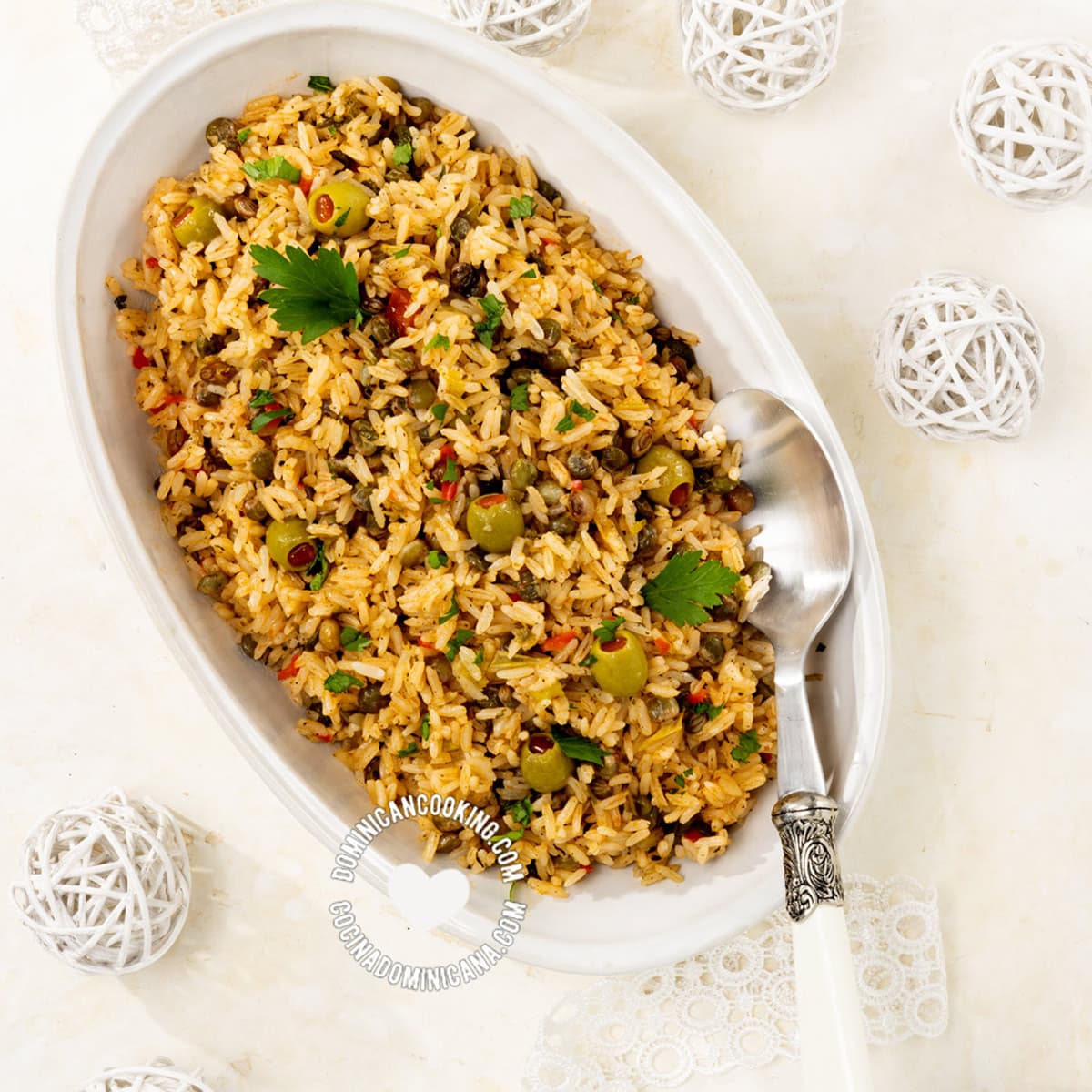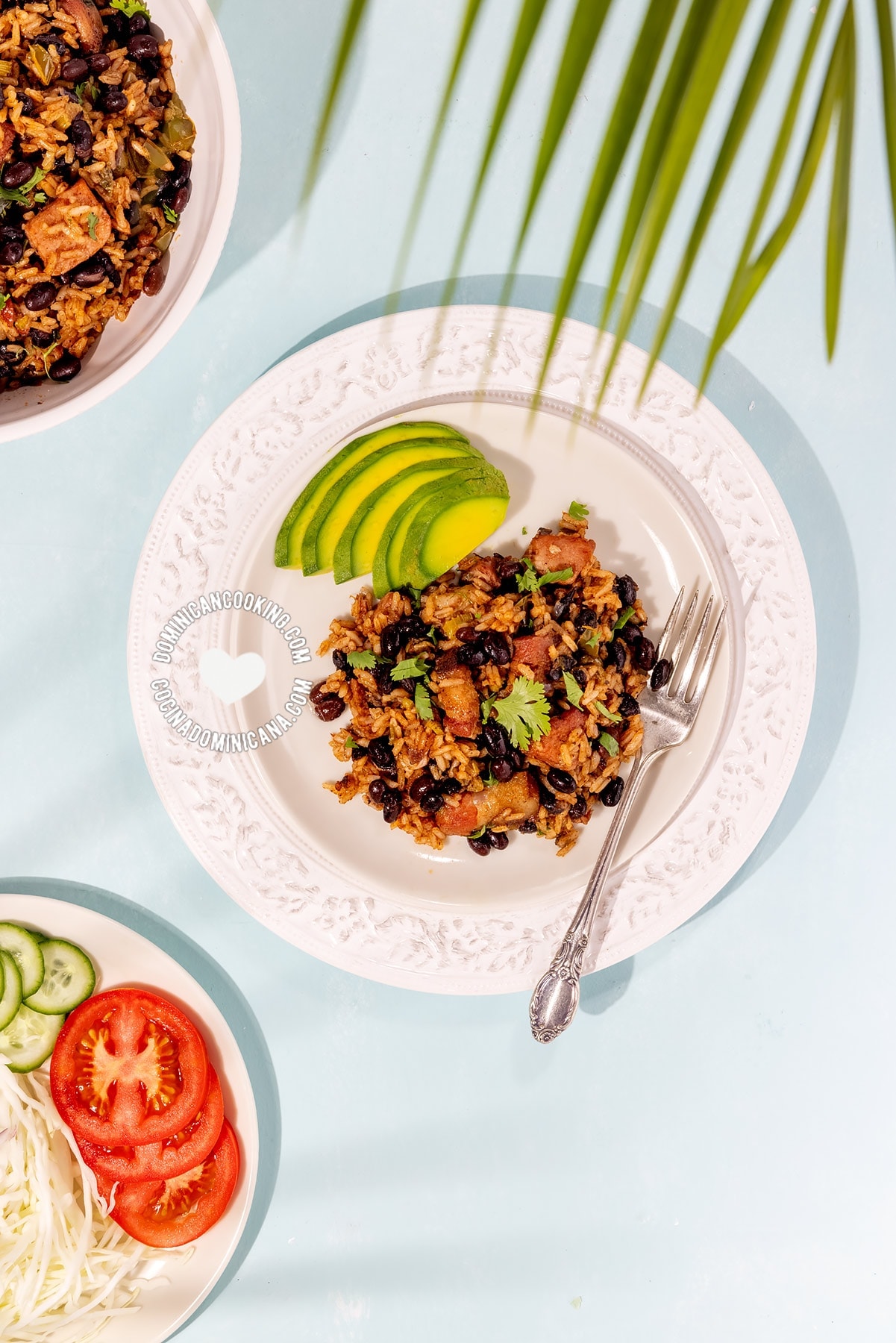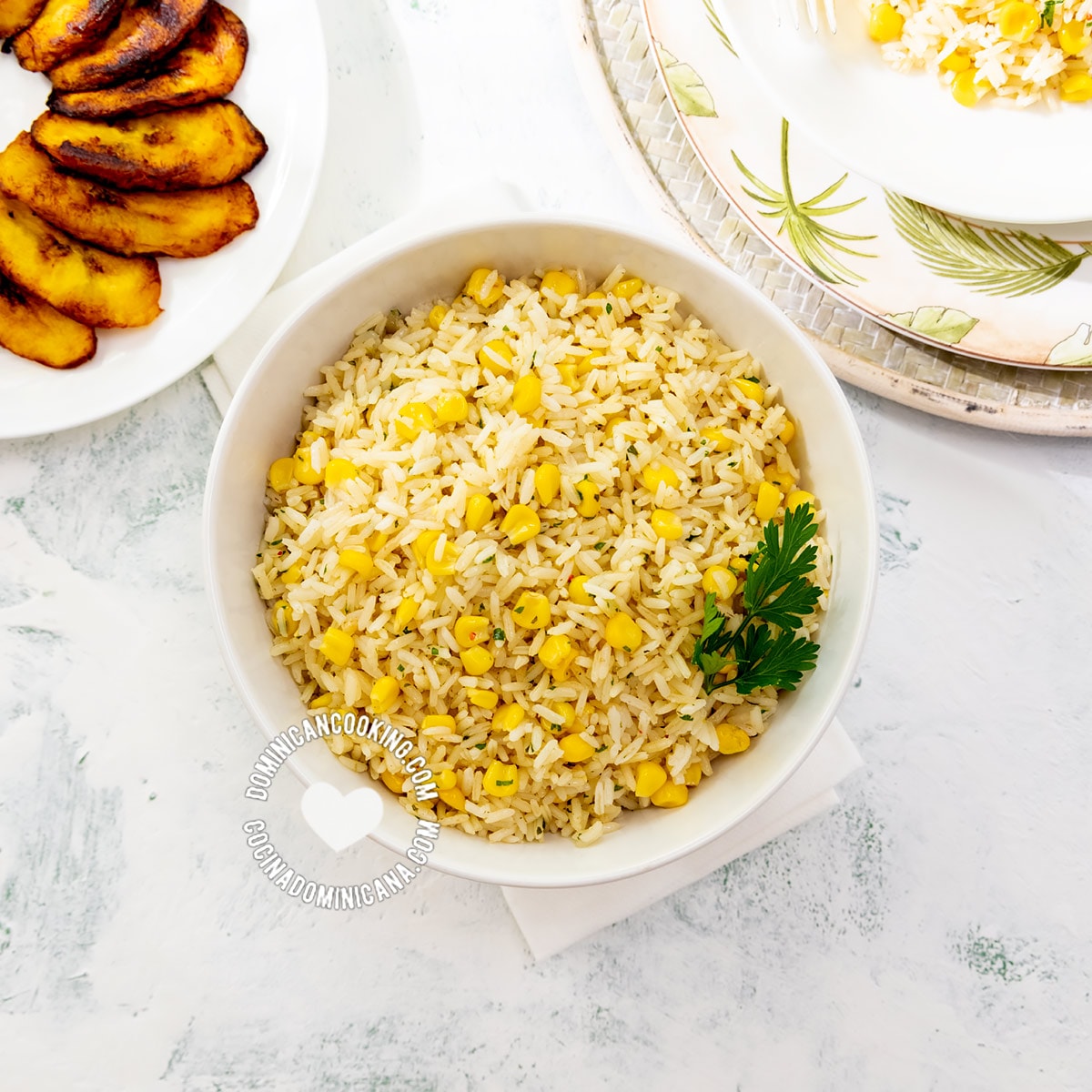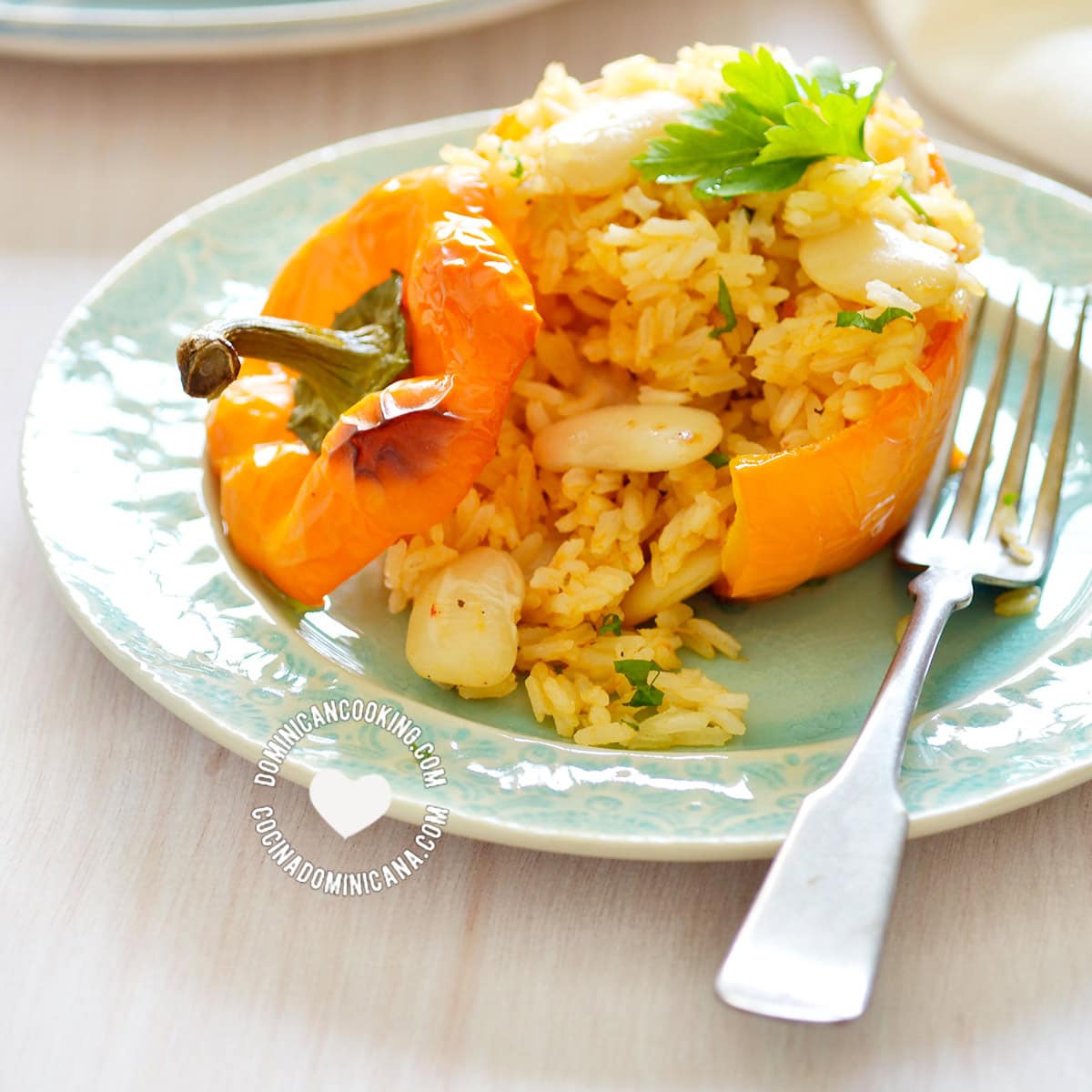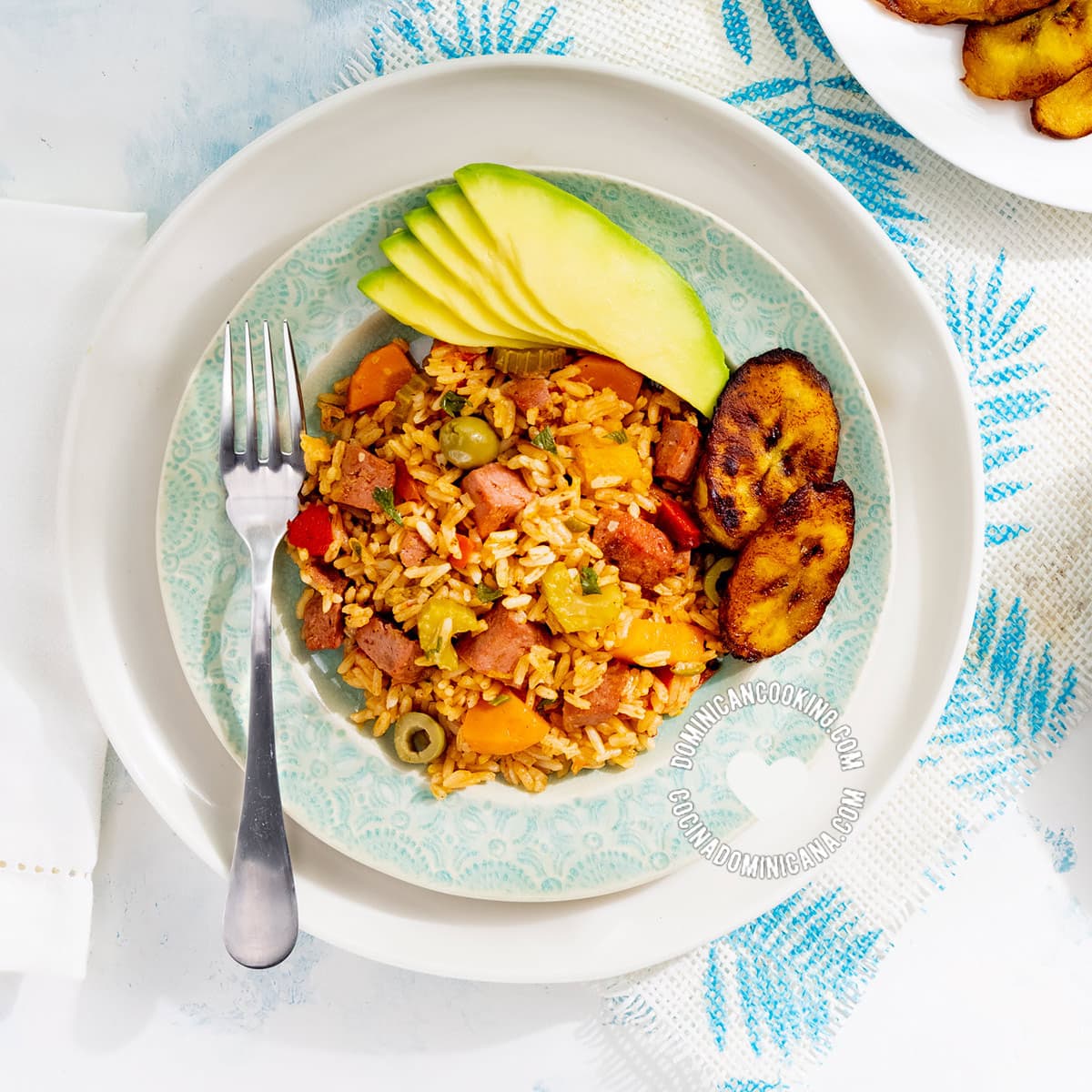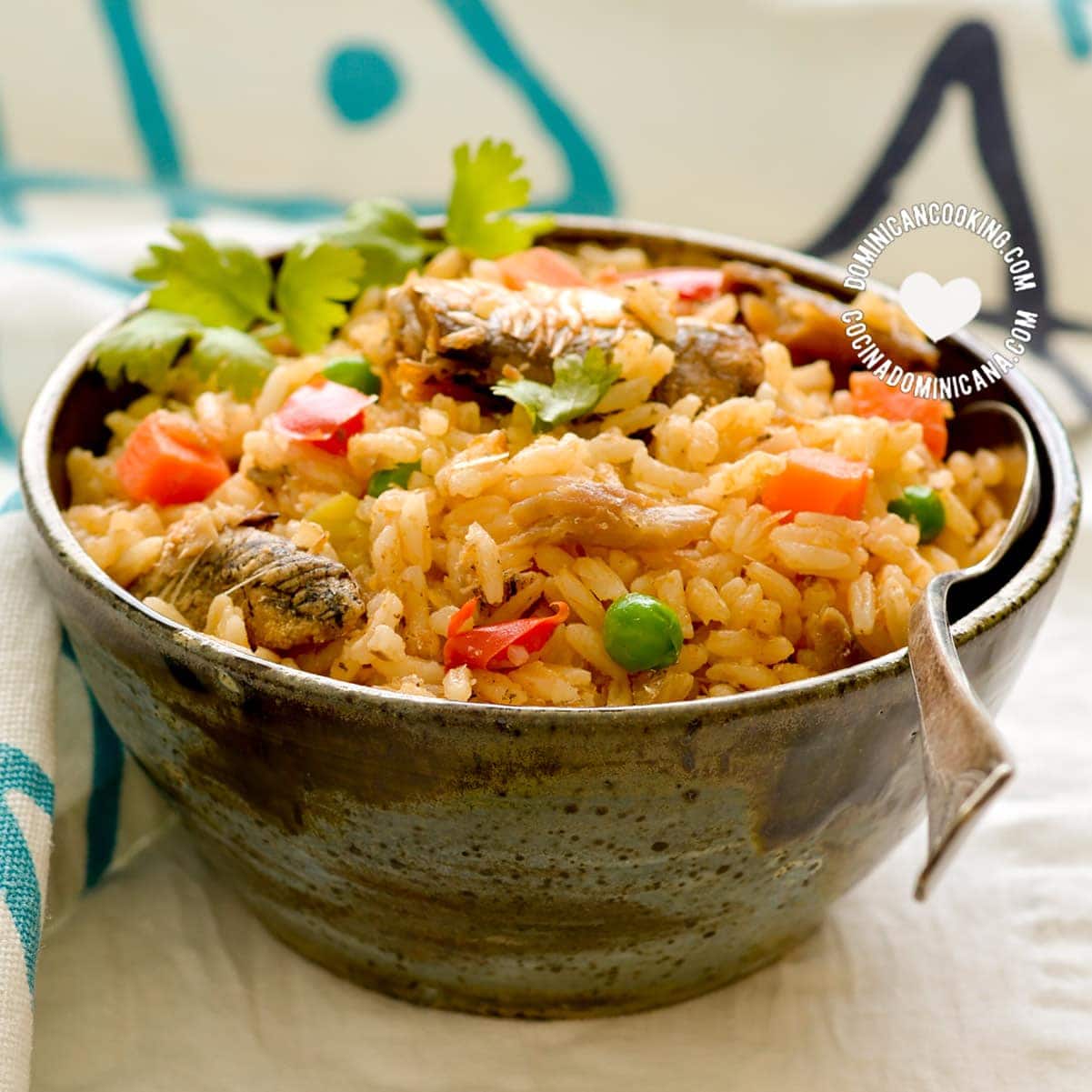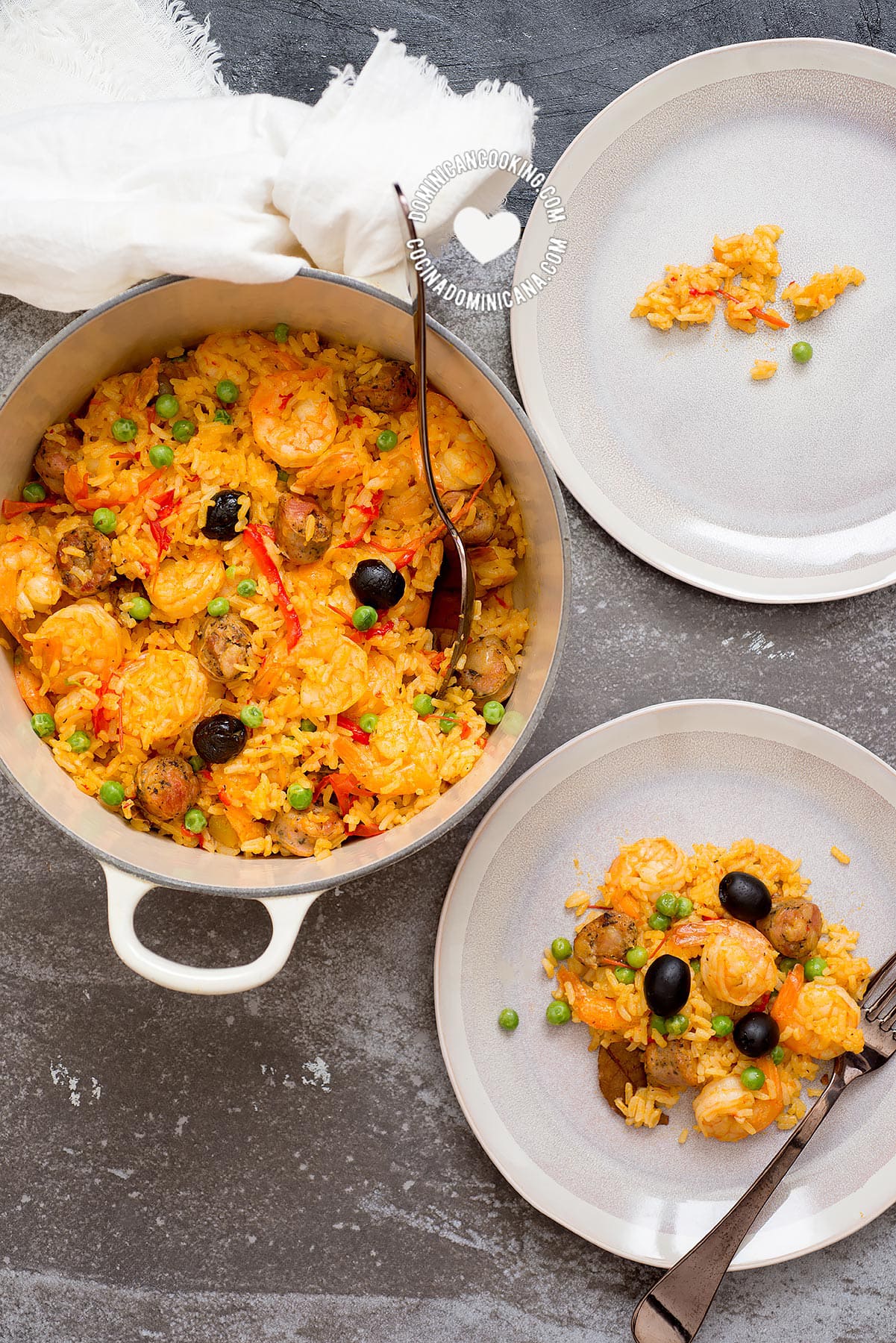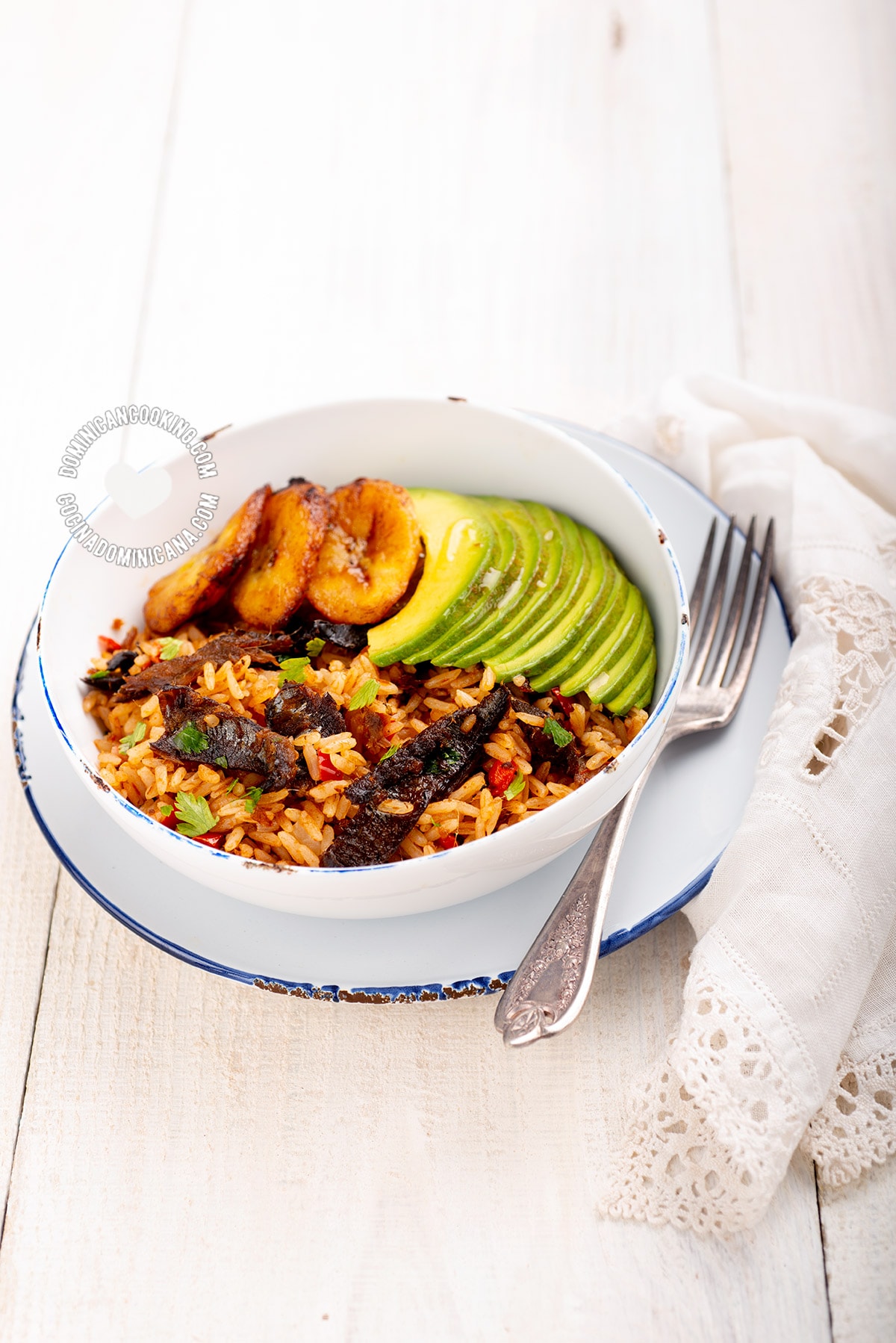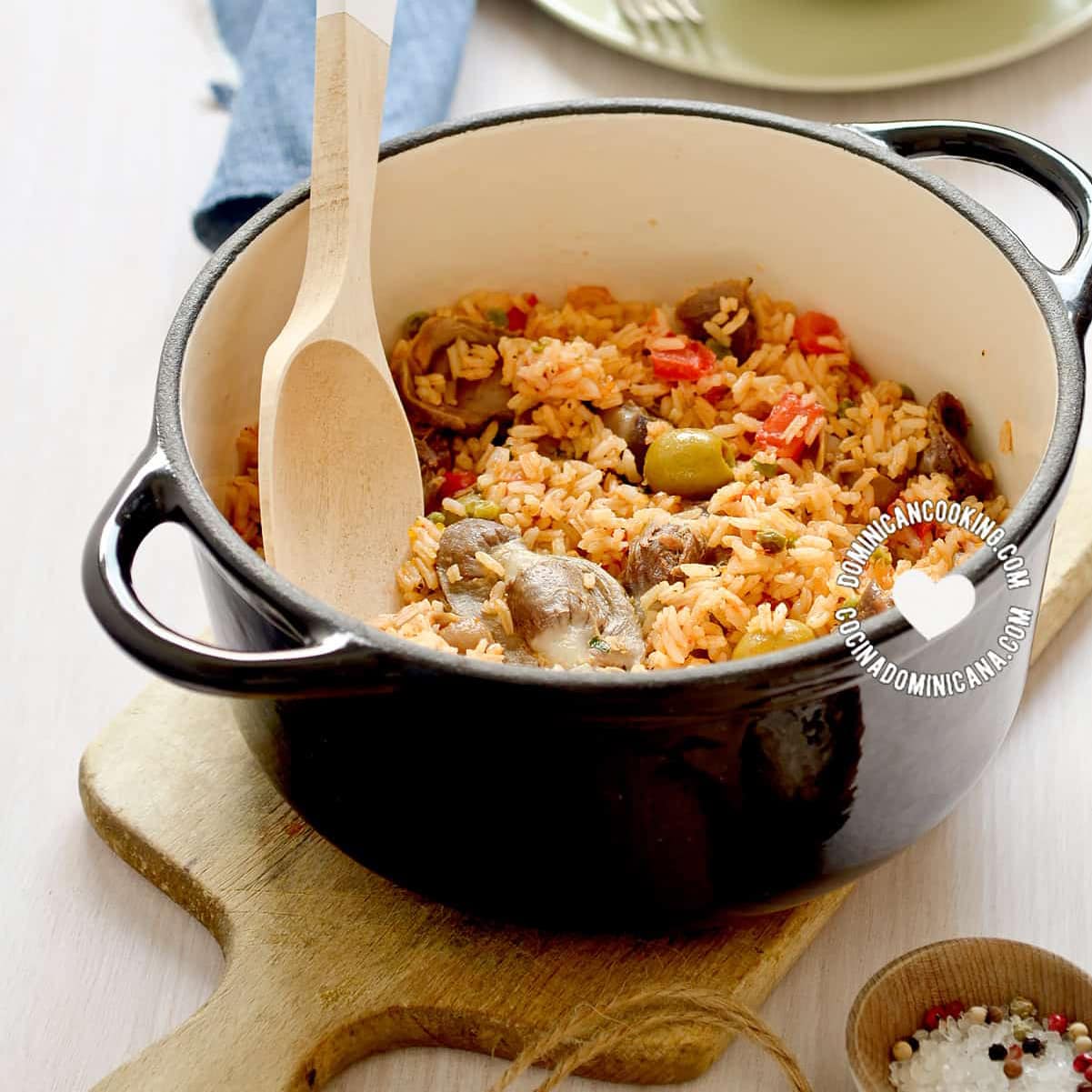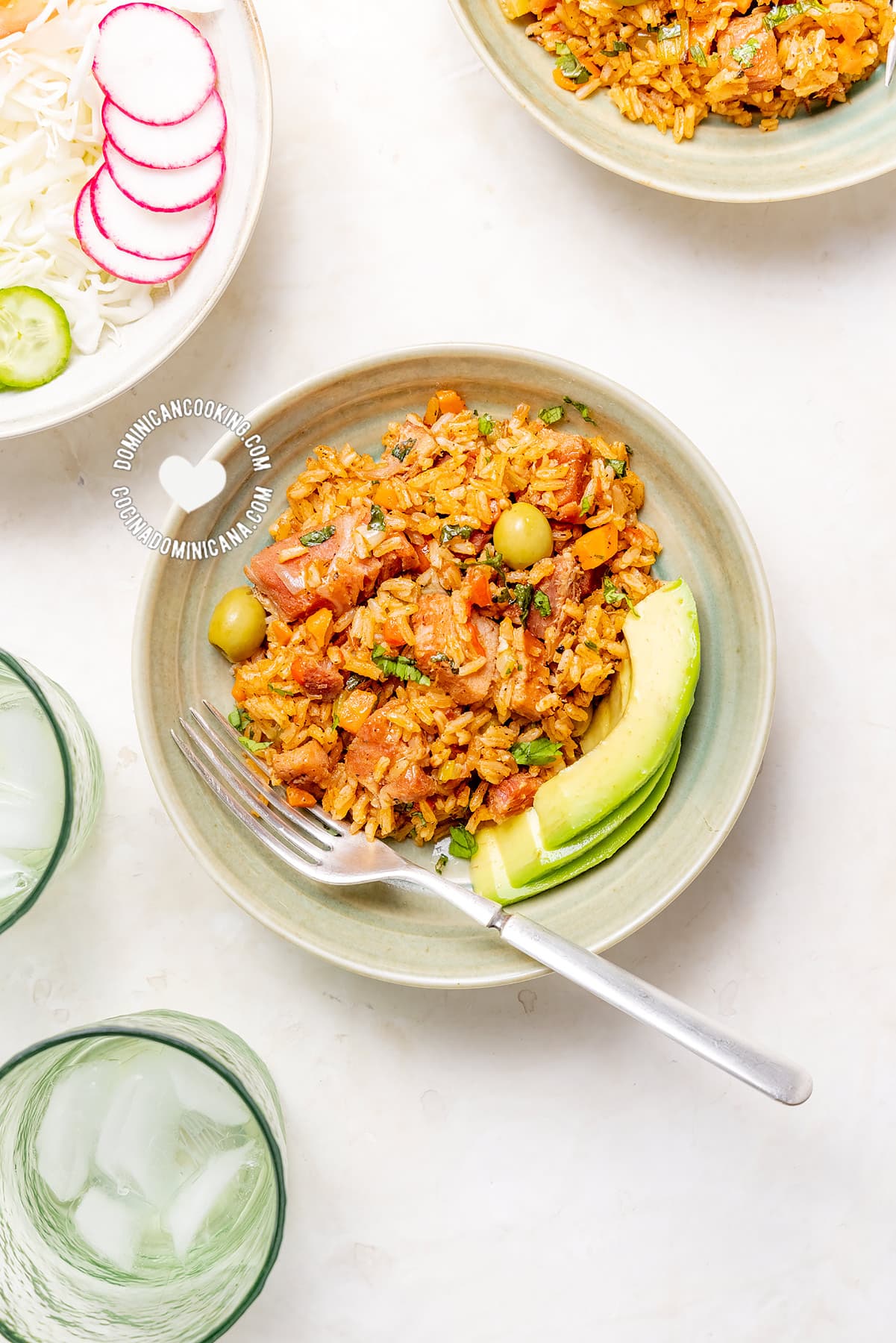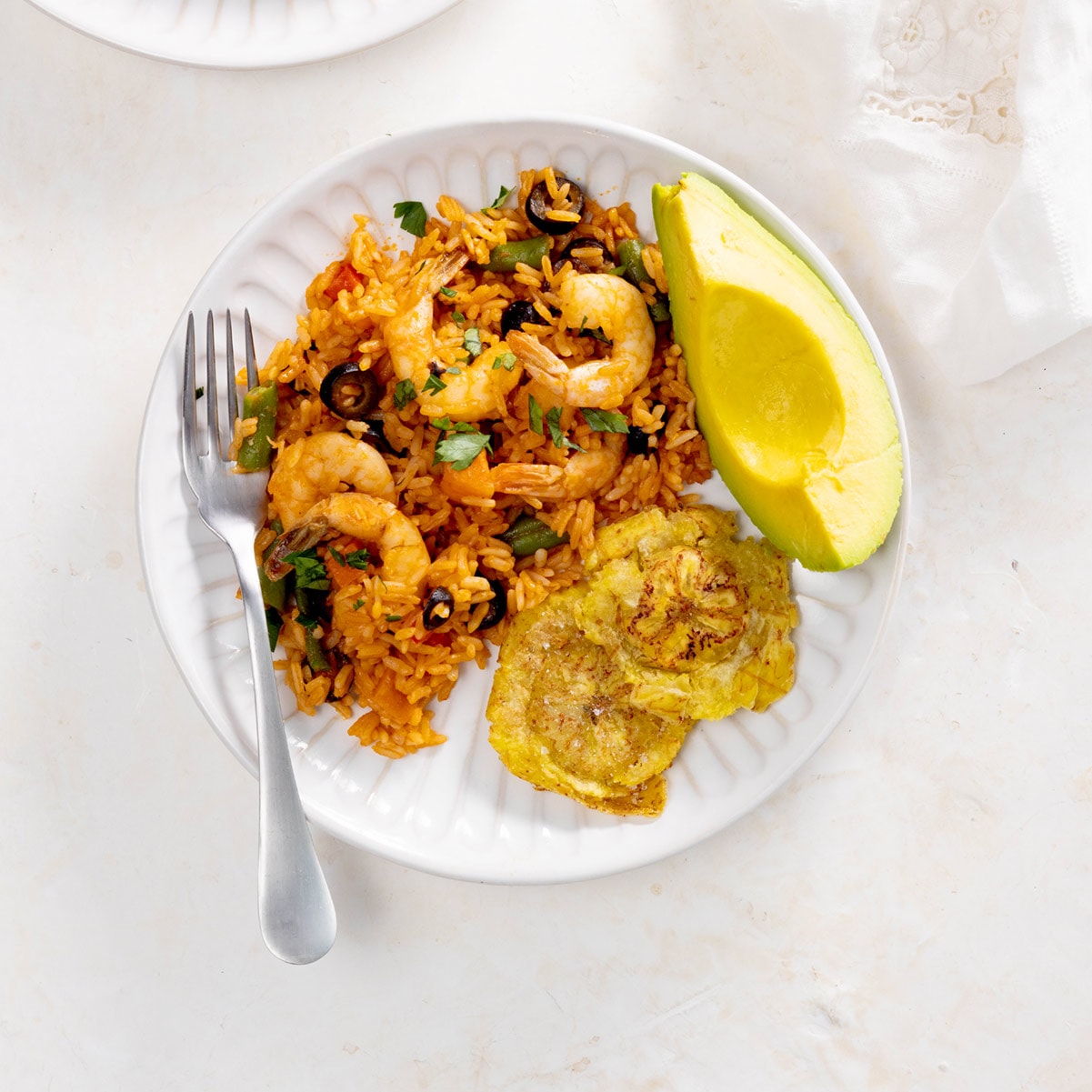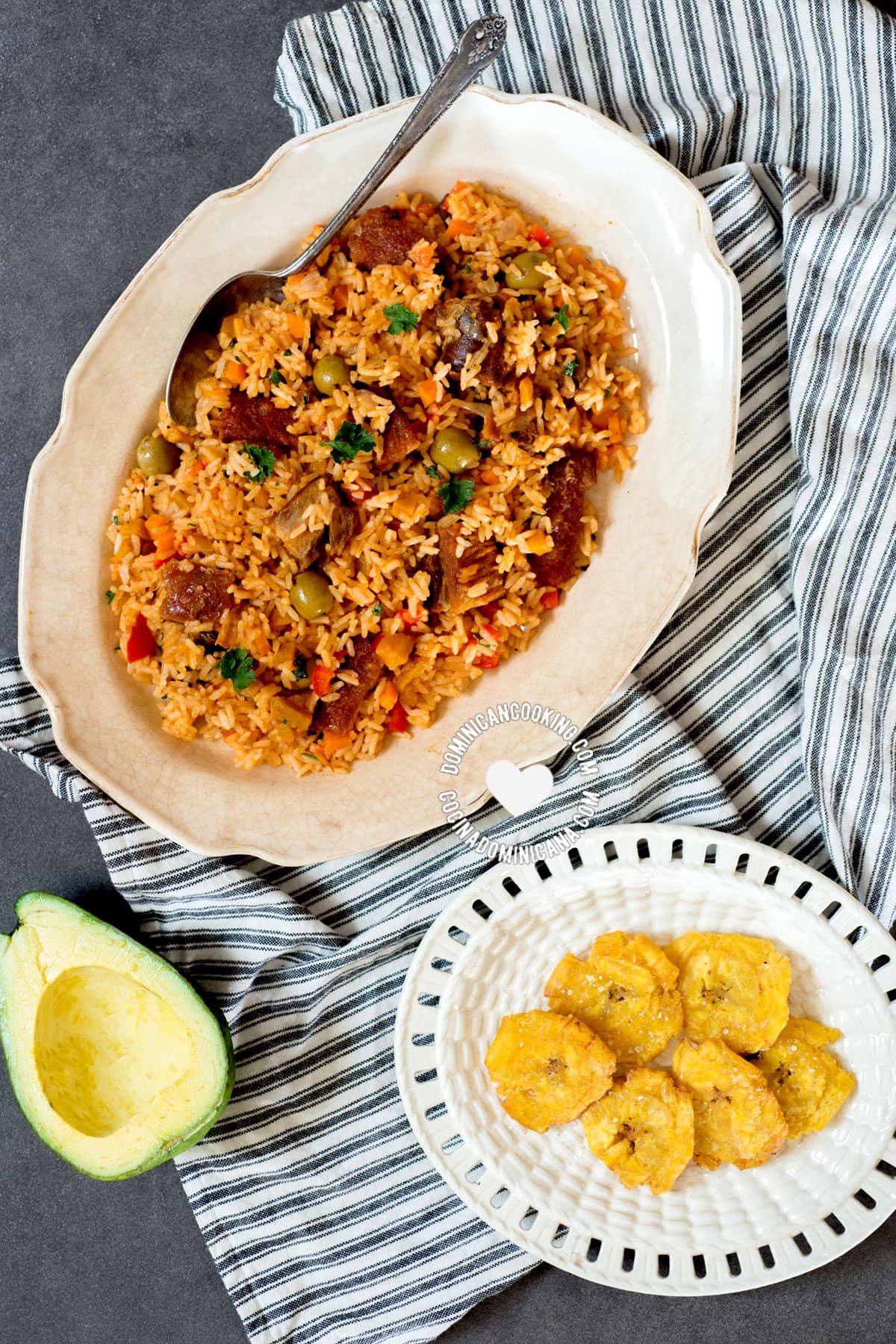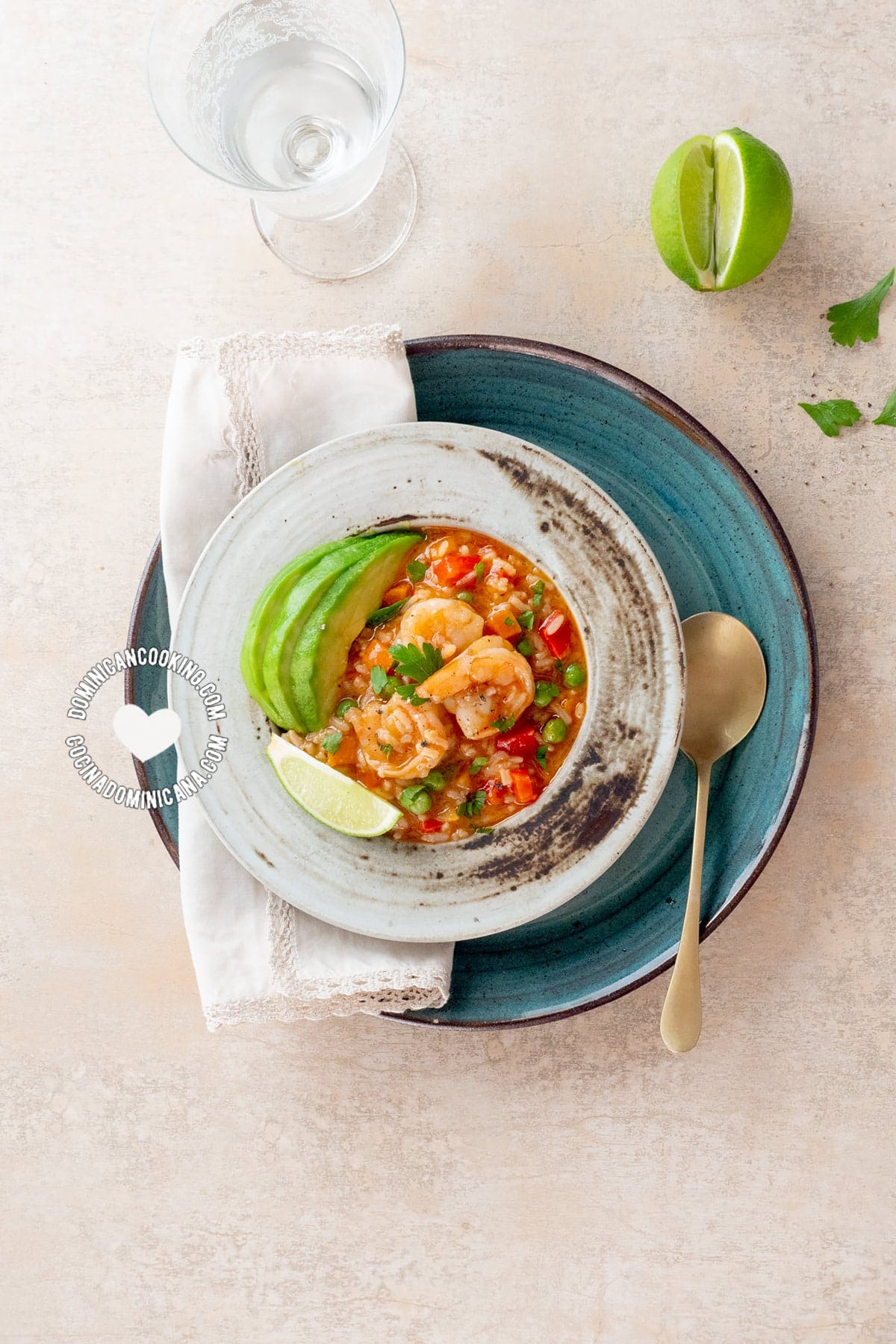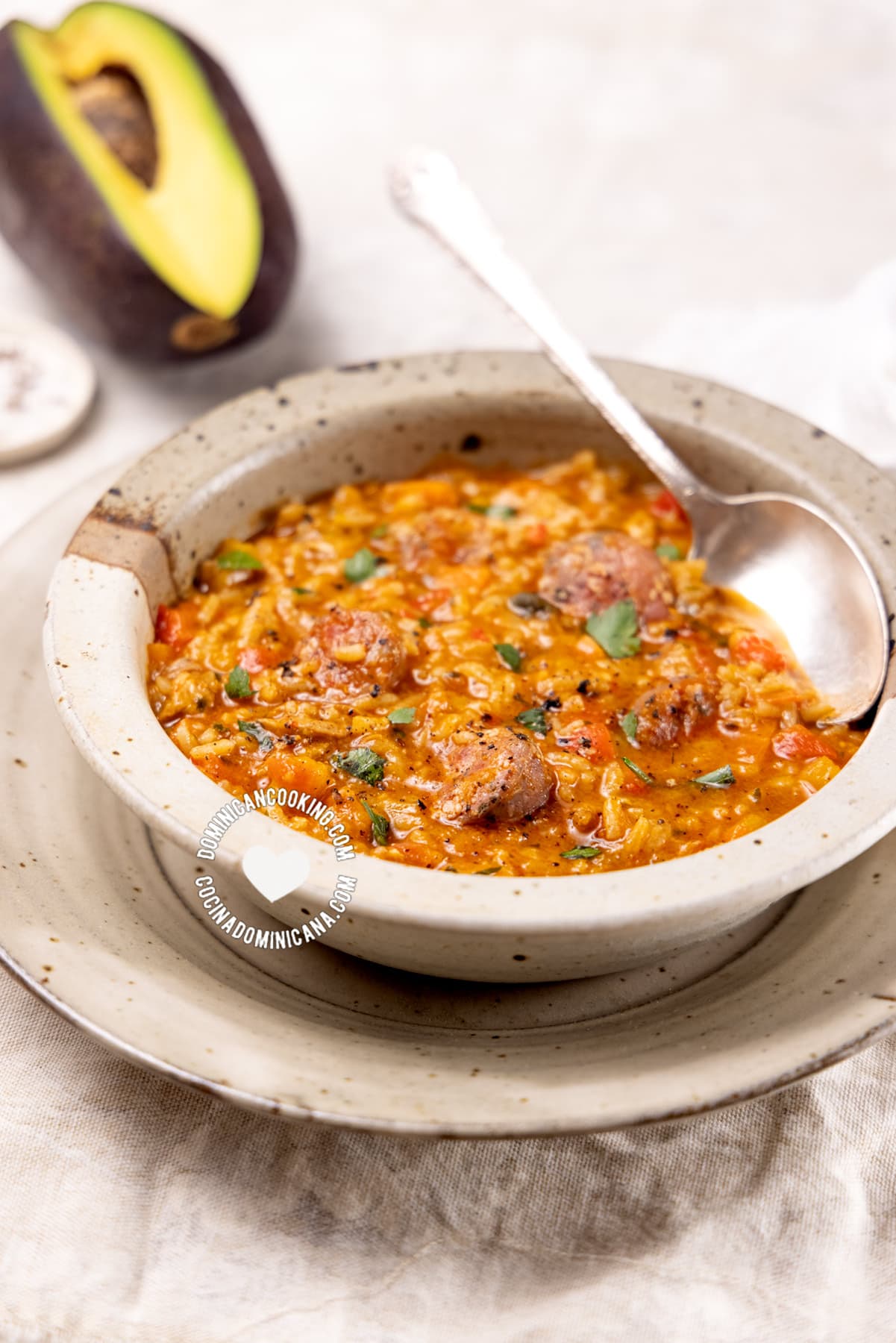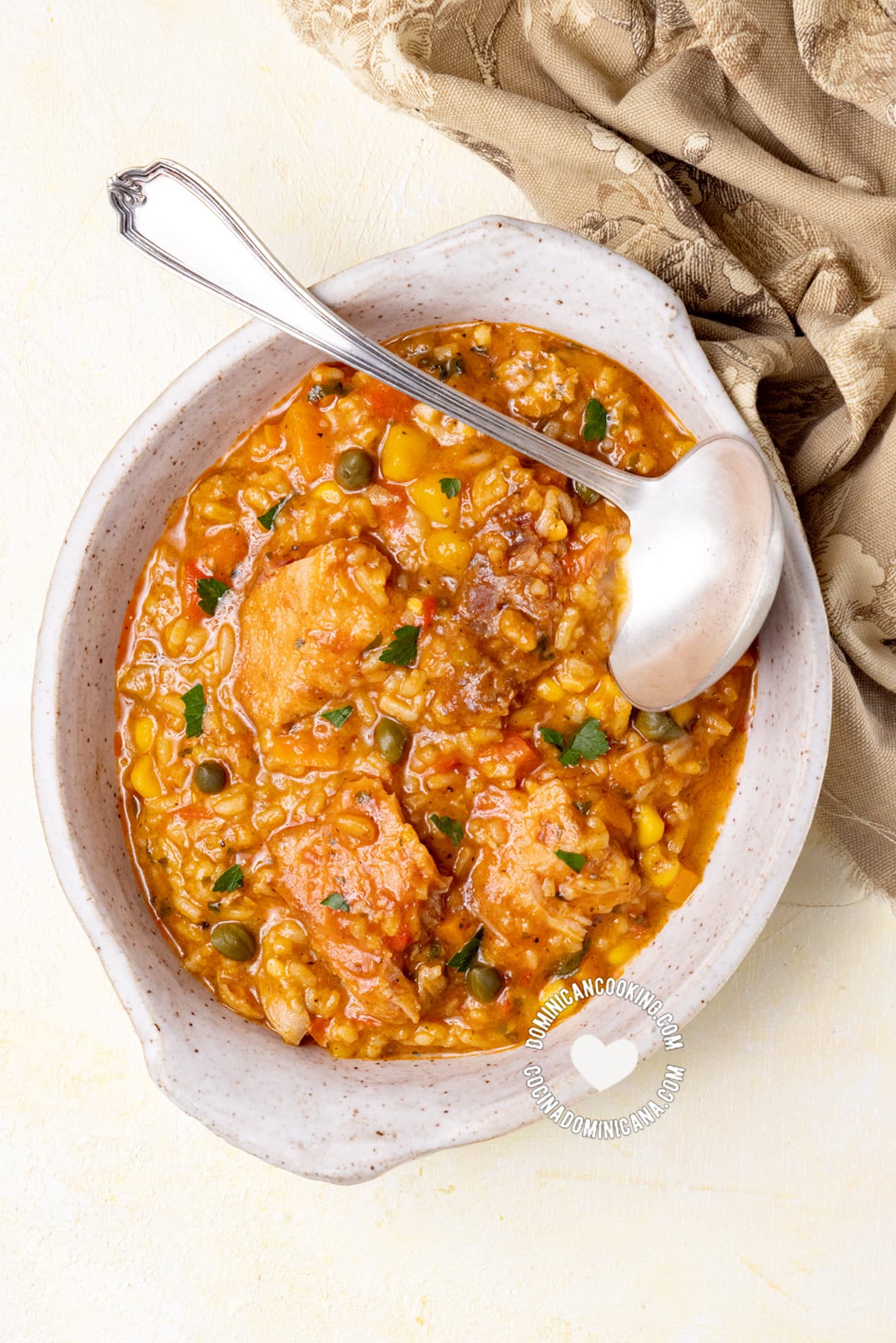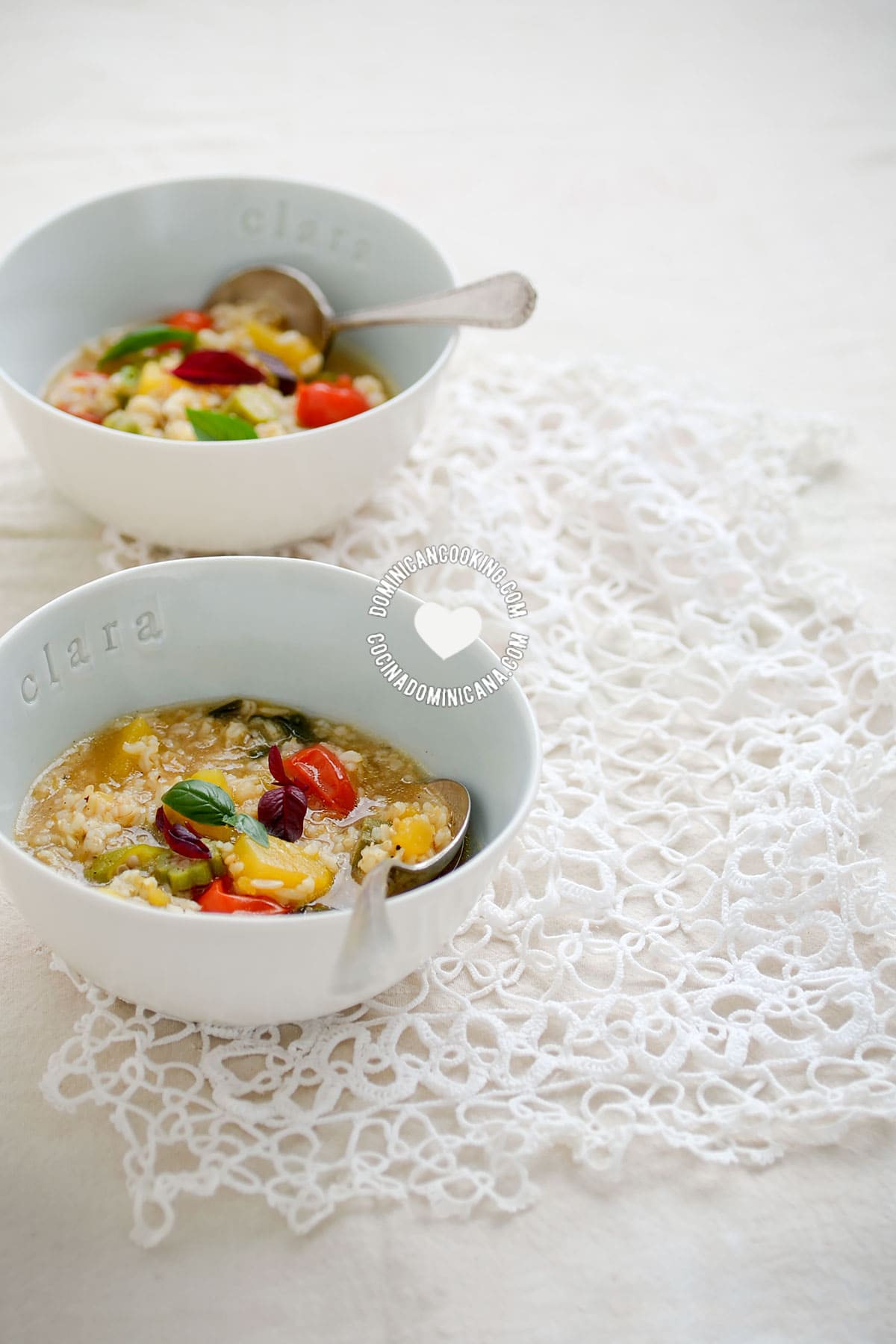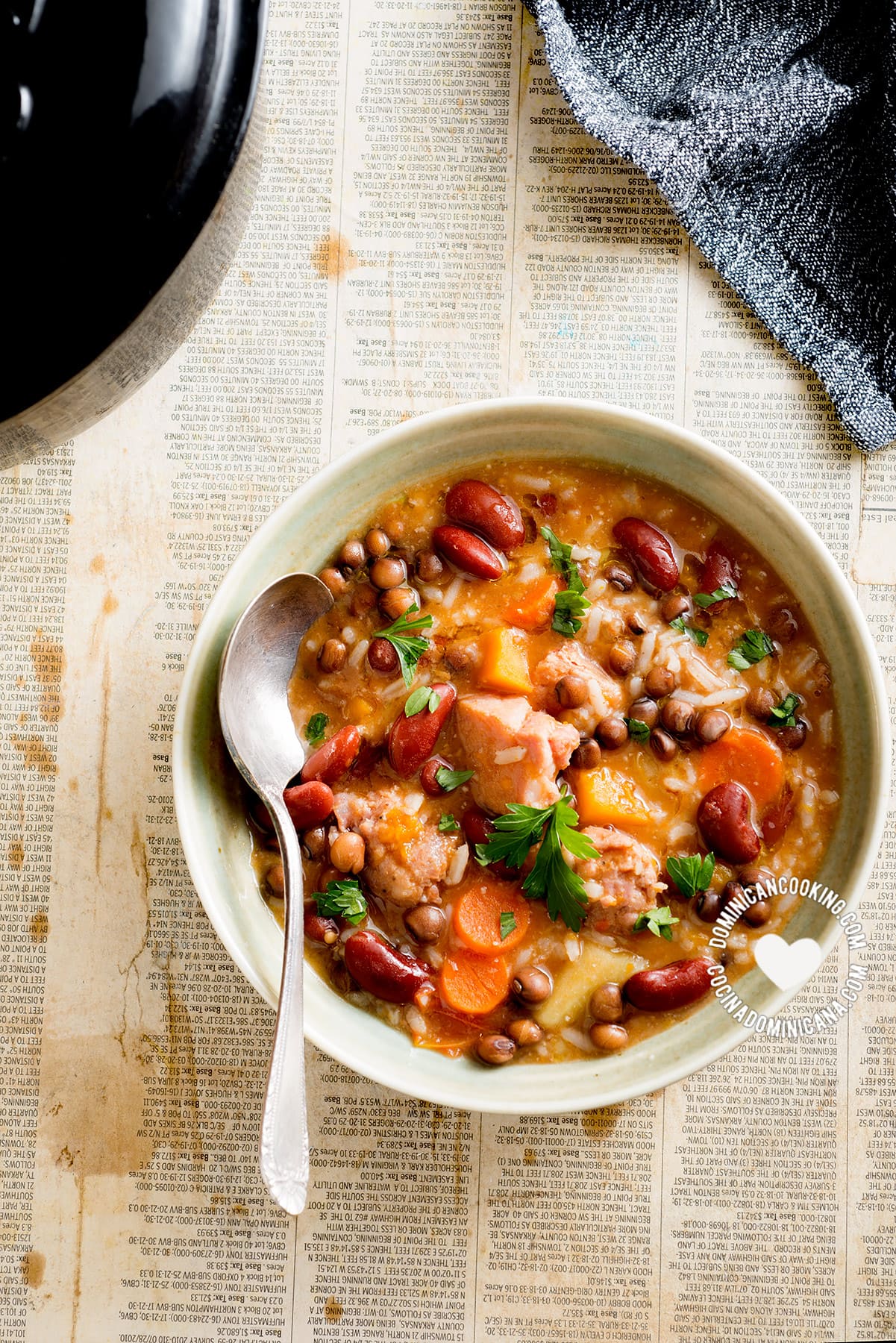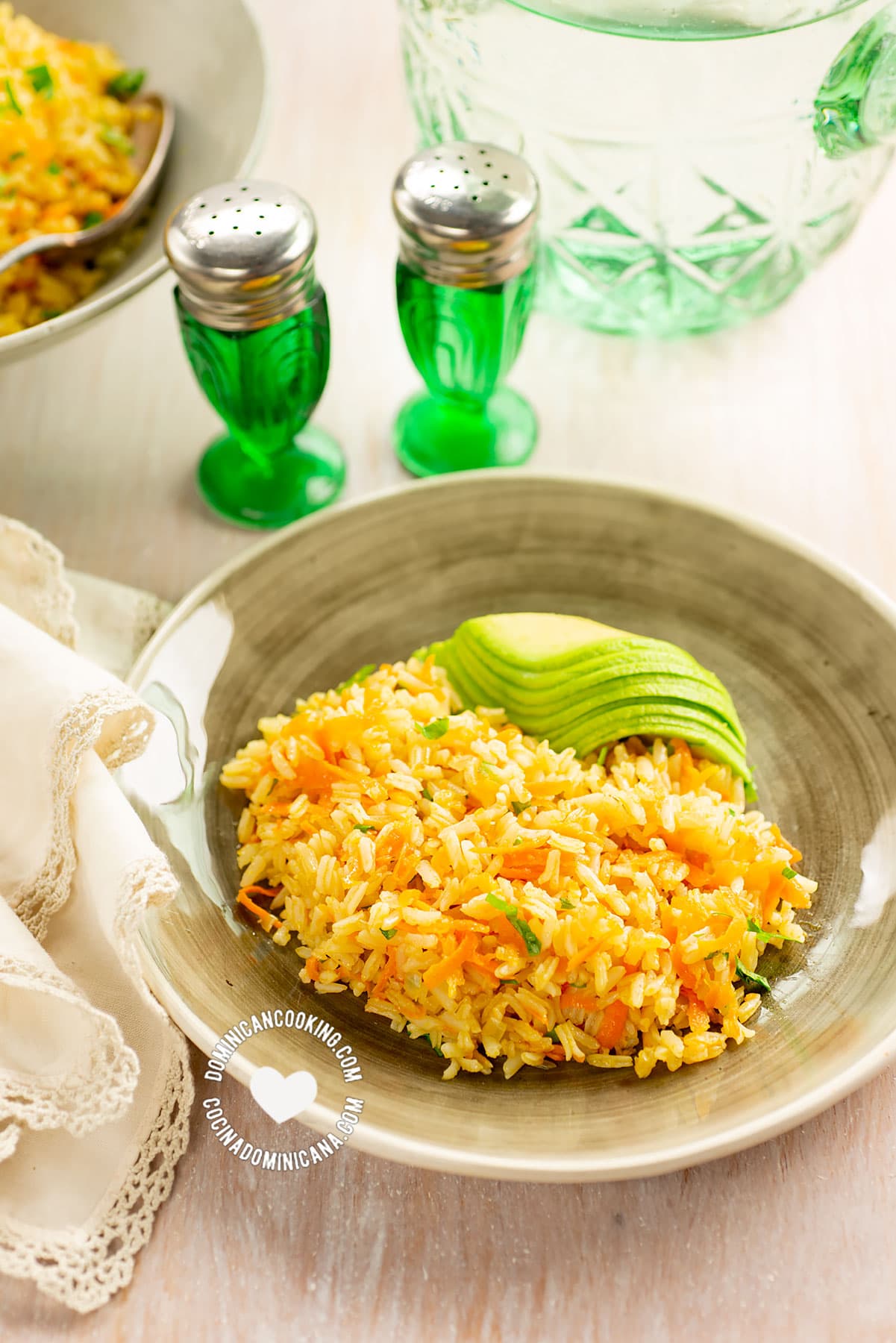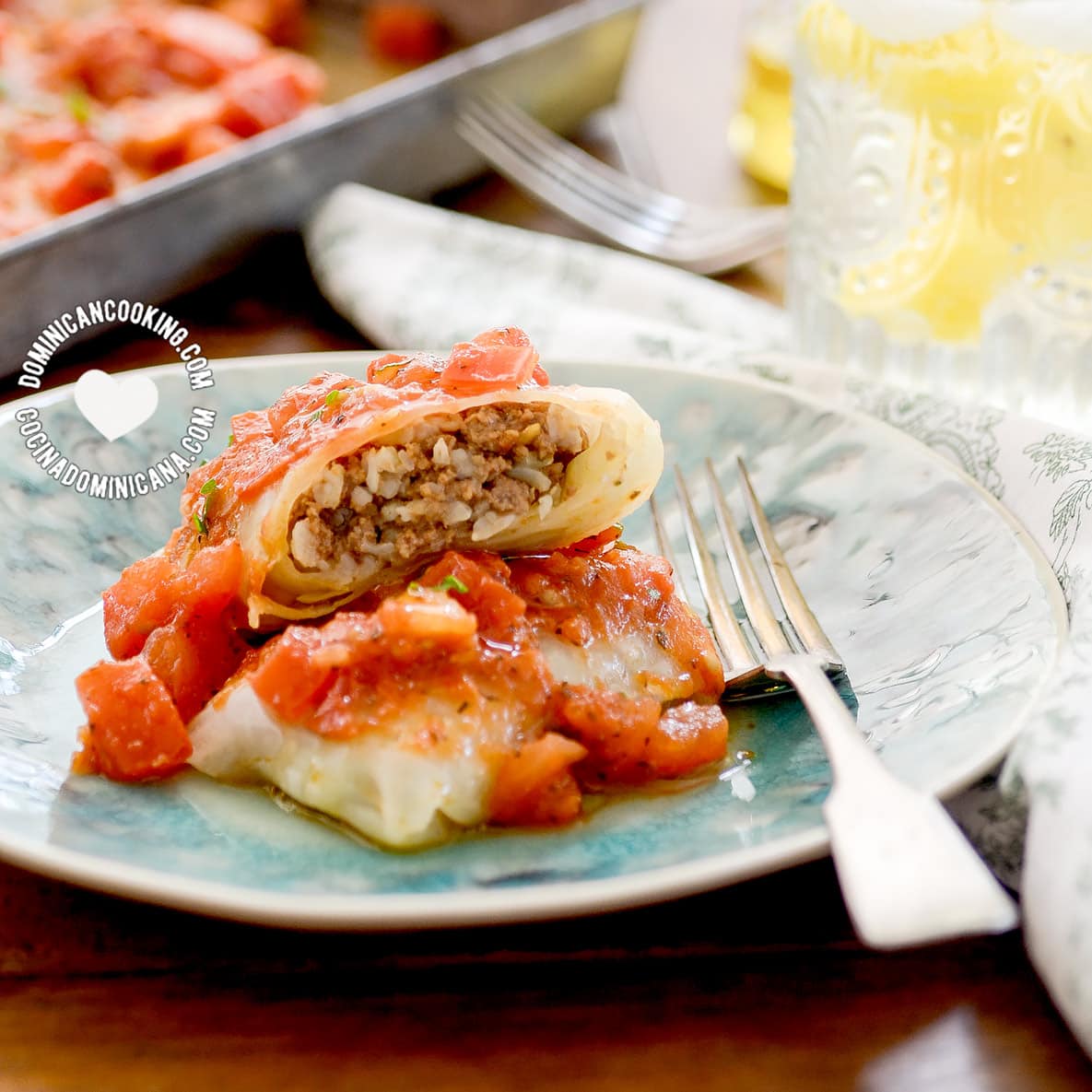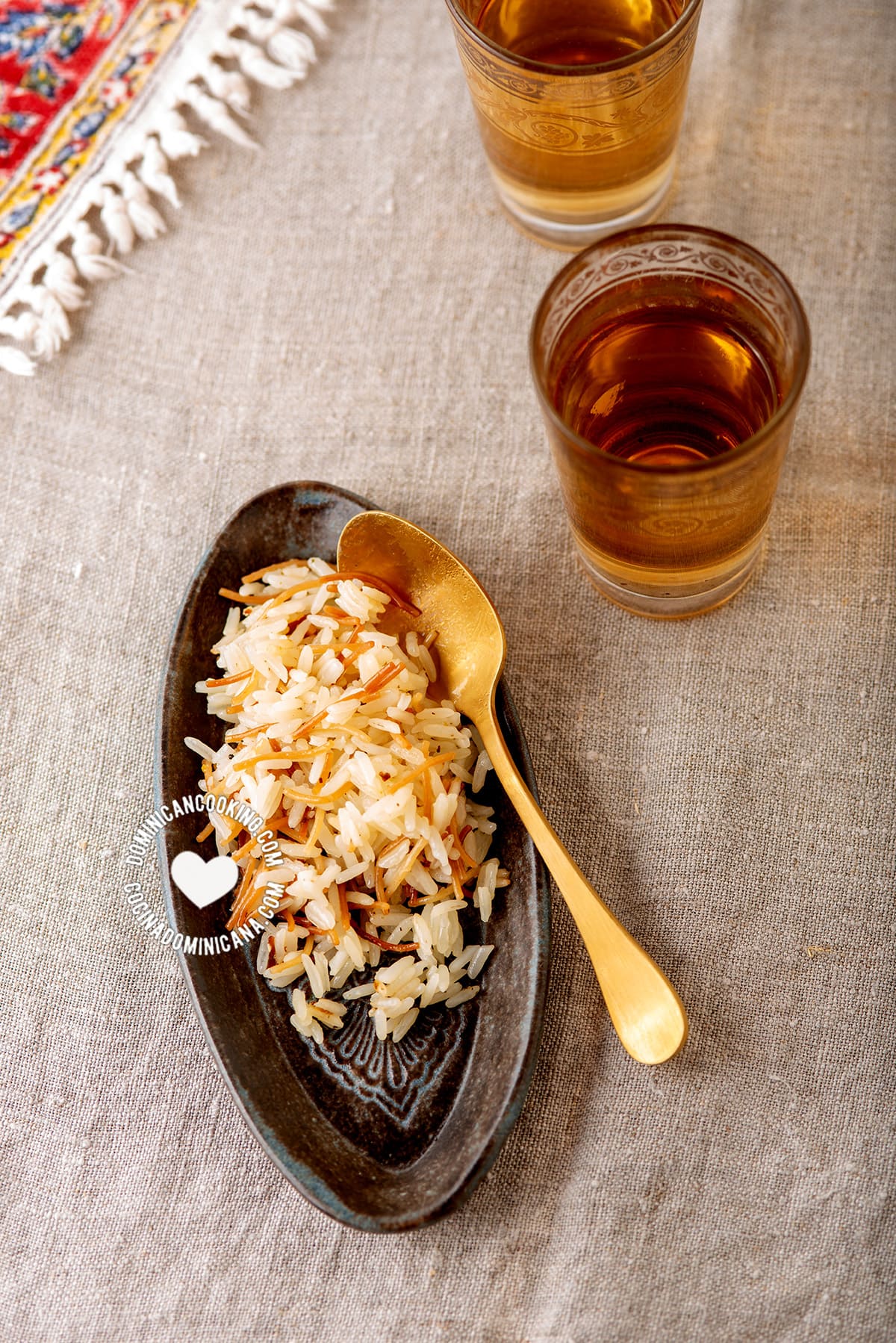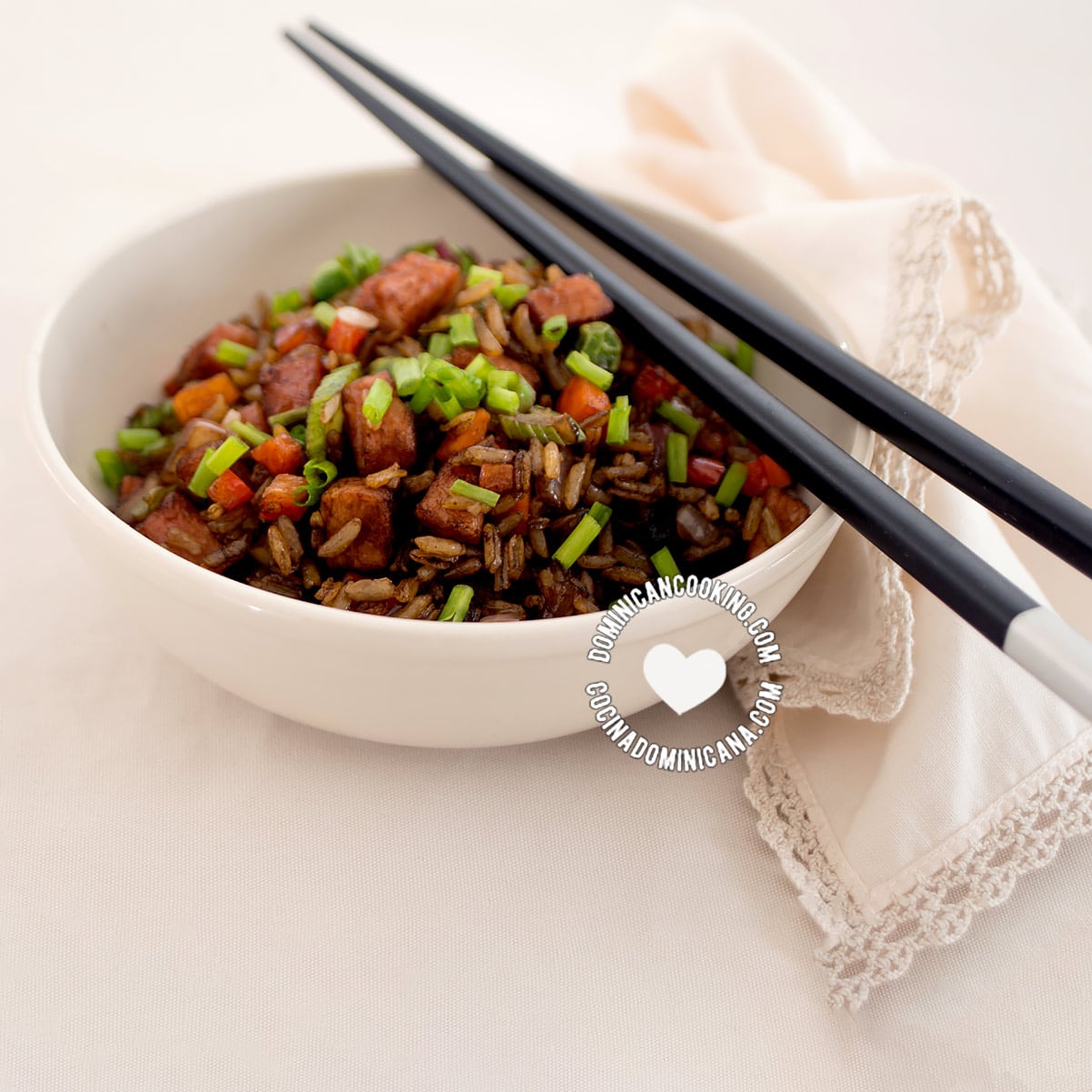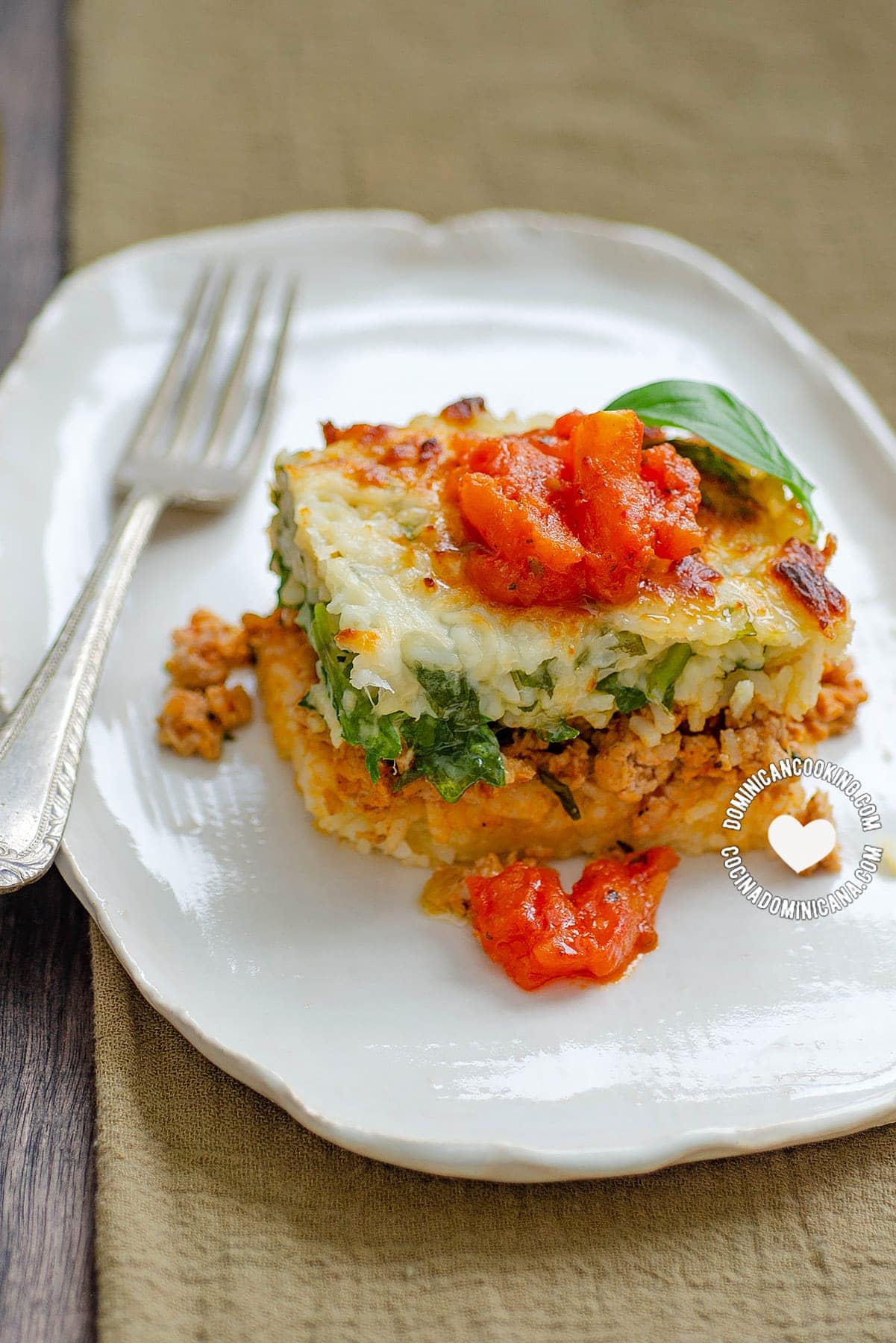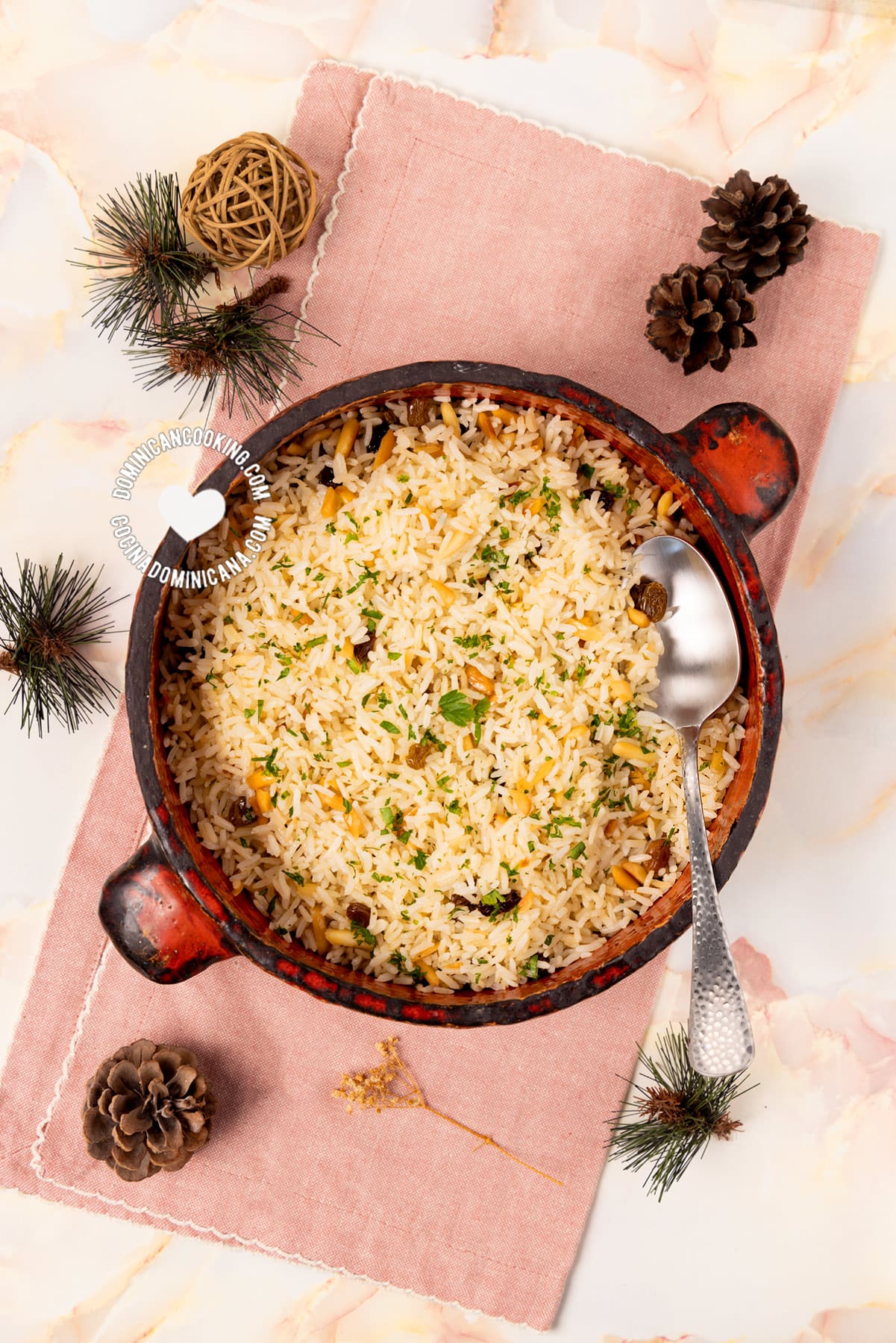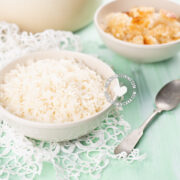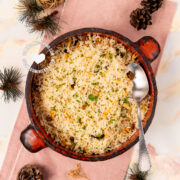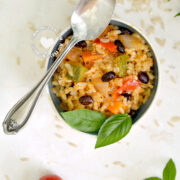Learn how to make Dominican rice recipes and all the ways it's made and served in our homes. For people from the Dominican Republic, rice is the base of lunch, the most important meal of the day.
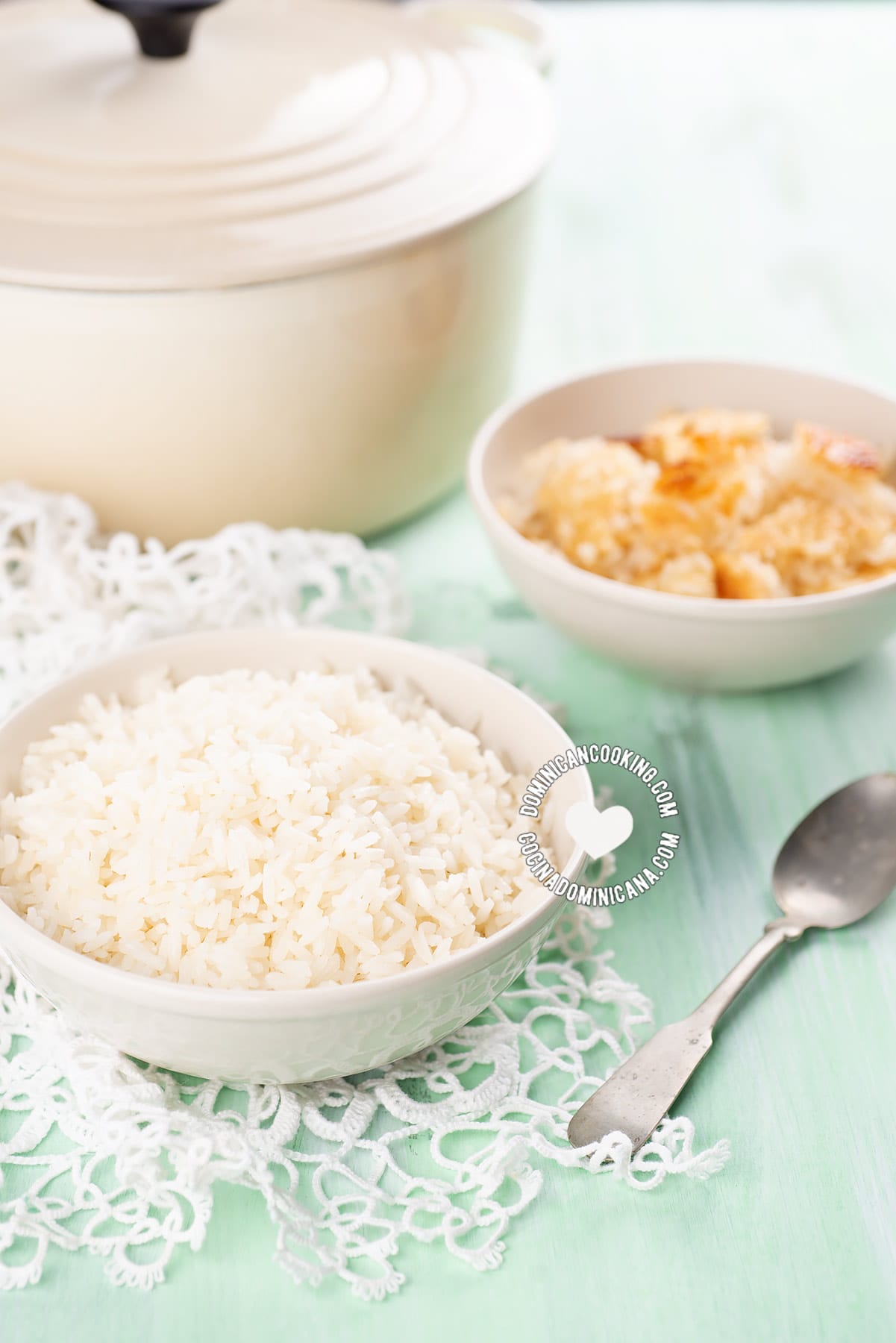
Why we ❤️ it
A plate of well-cooked, steaming, glistening rice is a thing of beauty, and one no Dominican voluntarily goes without. From the simple arroz blanco, to the more complex rice dishes in our gastronomy, we've found ways to dress up the humble grain.
For us, rice day is any day that ends in y, and rice and beans are much more than just food, they are part of our cultural heritage. For us, "no hay comida sin arroz" (there's no lunch without rice).
Dominicans make rice in many ways, but I will explore the types of rice dishes and methods used in our cuisine.
Dominican rice basics
If you prefer to go straight to the rice recipes, you can do so by clicking on the button below.
Type of rice
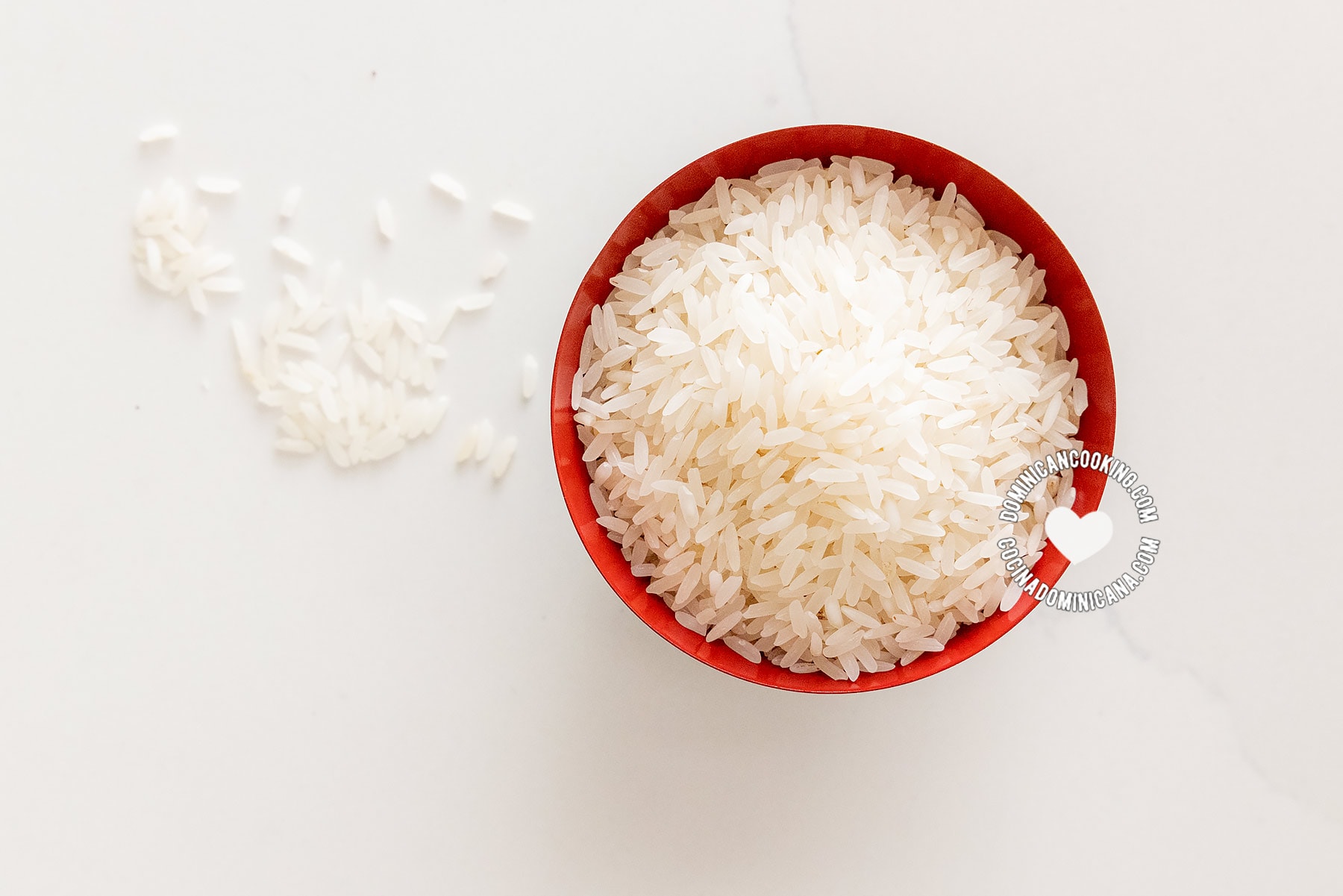
The common Dominican rice is white, long-grain rice, or Carolina rice. It has a medium starch content, which makes it very versatile, and can be made into anything from fluffed white rice to thick pottages.
Dominican rice pot
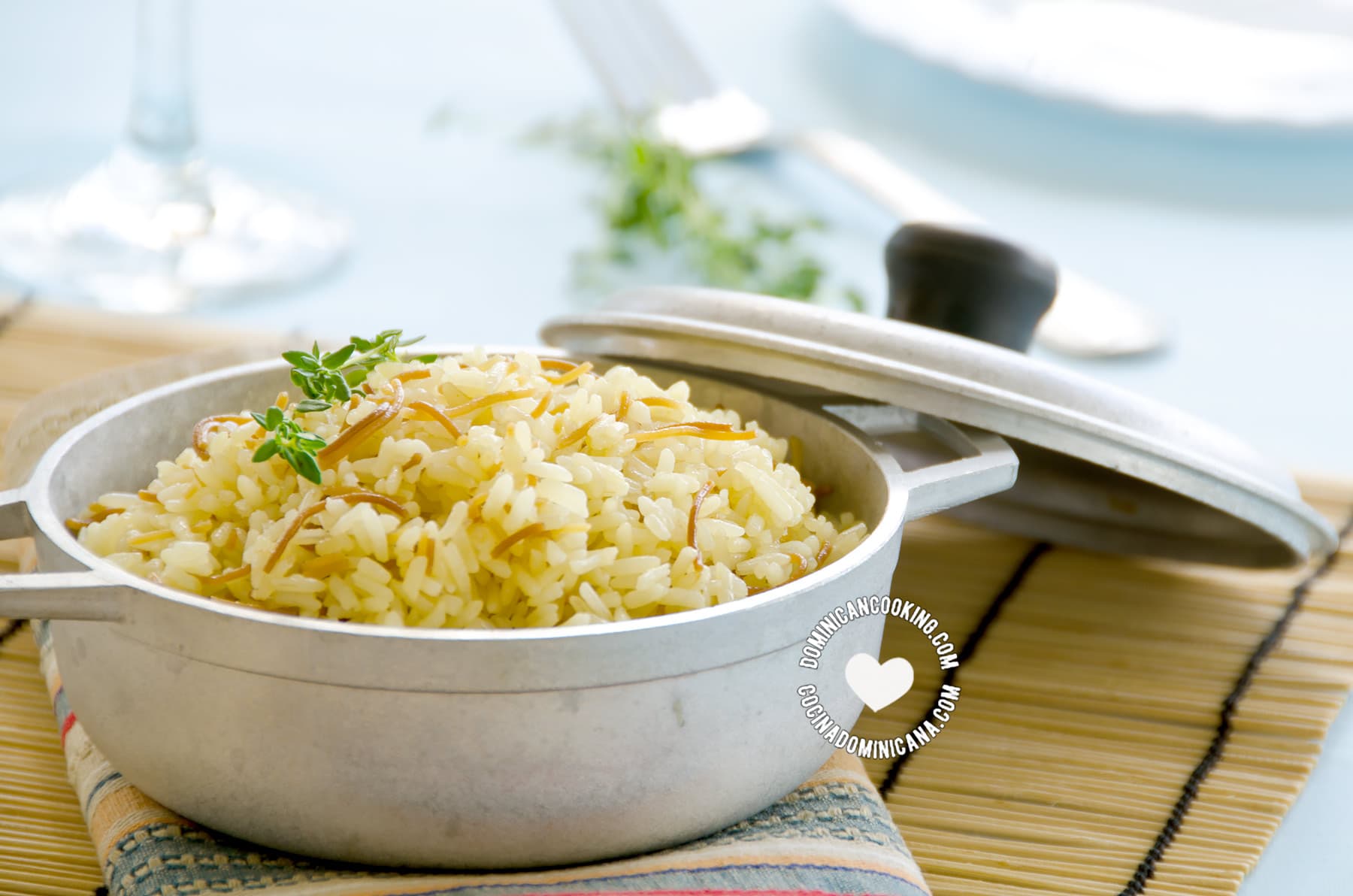
The Dominican rice pot is typically a cast aluminum pot with a tight-fitting lid, and we call it paila or caldero.
If you do not have one of those, I have successfully made Dominican-style rice in many other types of pots and used all kinds of cookers from charcoal to induction. I also regularly test my rice recipes in more than one type of cooker. You may need to do some at-home experimentation, but it's completely doable with what you have at hand.
How to cook Dominican rice
To cook Dominican rice, heat oil and water over medium heat (or liquid, depending on the rice dish) until it reaches a boil, rice is added cooked over medium-high heat stirring often. Once the liquid has evaporated, the rice is covered and cooked at lower heat for several minutes, then stir rice and cook again.
Bear in mind that each recipe has exact instructions for that specific dish.
Water to rice ratio
How much water you'll add to the rice will depend on the recipe you are preparing. As a general rule, I add 1.5 cups of water per cup of rice for arroz blanco, and 1:1 for locrios and moros that contain vegetables and herbs, as those release liquid while they cook. Asopaos and some other recipes will vary significantly.
| Rice dish | Rice | Water |
|---|---|---|
| White rice | 1 cup | 1.5 cups |
| Locrio | 1 cup | 1 cup |
| Moro | 1 cup | 1 cup |
| Asopao | 1 cup | 3 cups |
Rice portions
Portions may vary for each family, but as a general rule, I serve 1 cup of rice if it's a side dish (arroz blanco, moro), 2.5 cups if it's the main dish (like locrio), and 3 cups for rice soups (asopao, chambre). Here's how I calculate how much rice I need to cook for white rice.
| Rice portions | Raw rice amount |
|---|---|
| 1 person | ½ cup |
| 2 people | 1 cup |
| 3 people | 1.5 cups |
| 4 people | 2 cups |
| 5 people | 2.5 cups |
| 6 people | 3 cups |
Concon
Once cooked the rice is served, and the crispy crust at the bottom of the pot (concón) is removed to be served as a treat (see the complete guide to concón to learn more).
Arroz blanco (Dominican white rice)
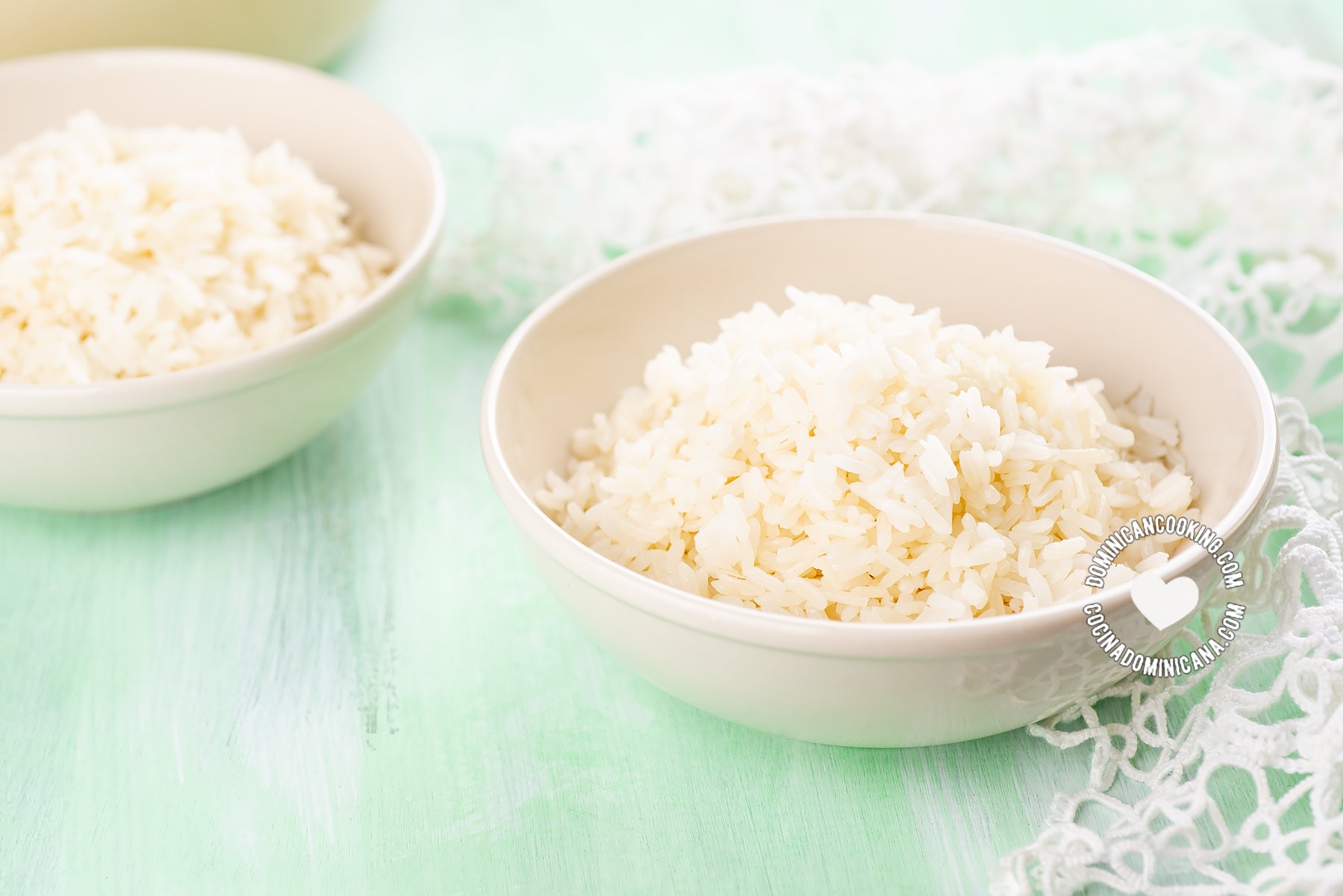
Arroz blanco (Dominican white rice) is the most basic rice dish in the Dominican republic, and contains just rice, water, salt, and oil. It is a staple on our tables, and one of the components of La Bandera Dominicana (The Dominican Flag), our iconic lunch meal consisting of white rice, habichuelas (stewed beans), braised meat (chicken or beef), and Dominican salad. This is one of the cornerstones of our cuisine, and a test of the competent Dominican cook.
How to serve arroz blanco
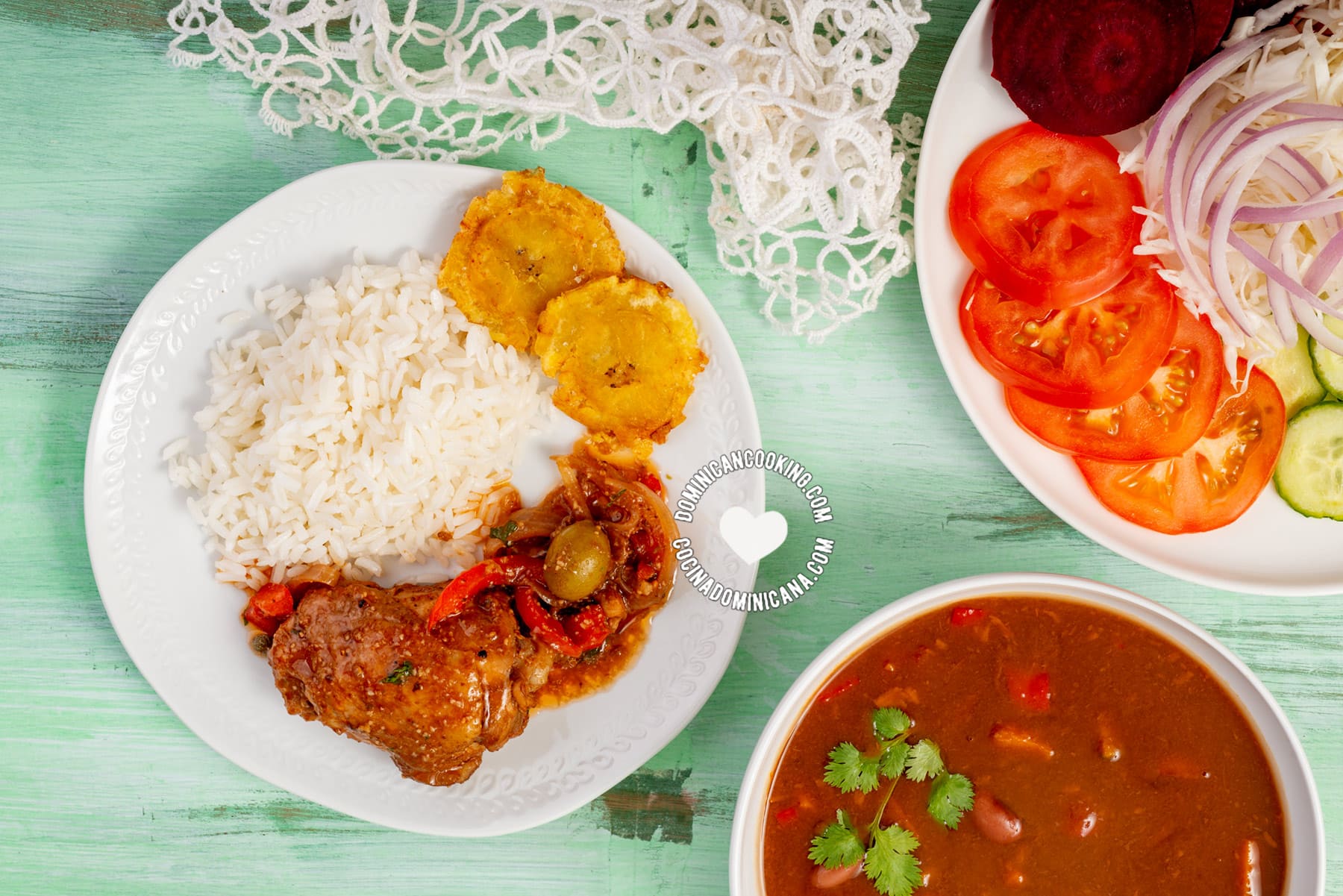
Arroz blanco should have grains that are cooked through and stay separate (graneado), instead of clumping together (apastado, or apatado). Some oil (usually vegetable, but some prefer olive oil) is drizzled at the end to fluff the rice, add flavor, and make it glisten.
The most common way to serve arroz blanco is as part of La Bandera, but it can also be served with many of our lunch and dinner dishes. Some favorite beans to go with it are habichuelas negras guisadas, or guandules guisados.
Moro (Dominican rice and beans)
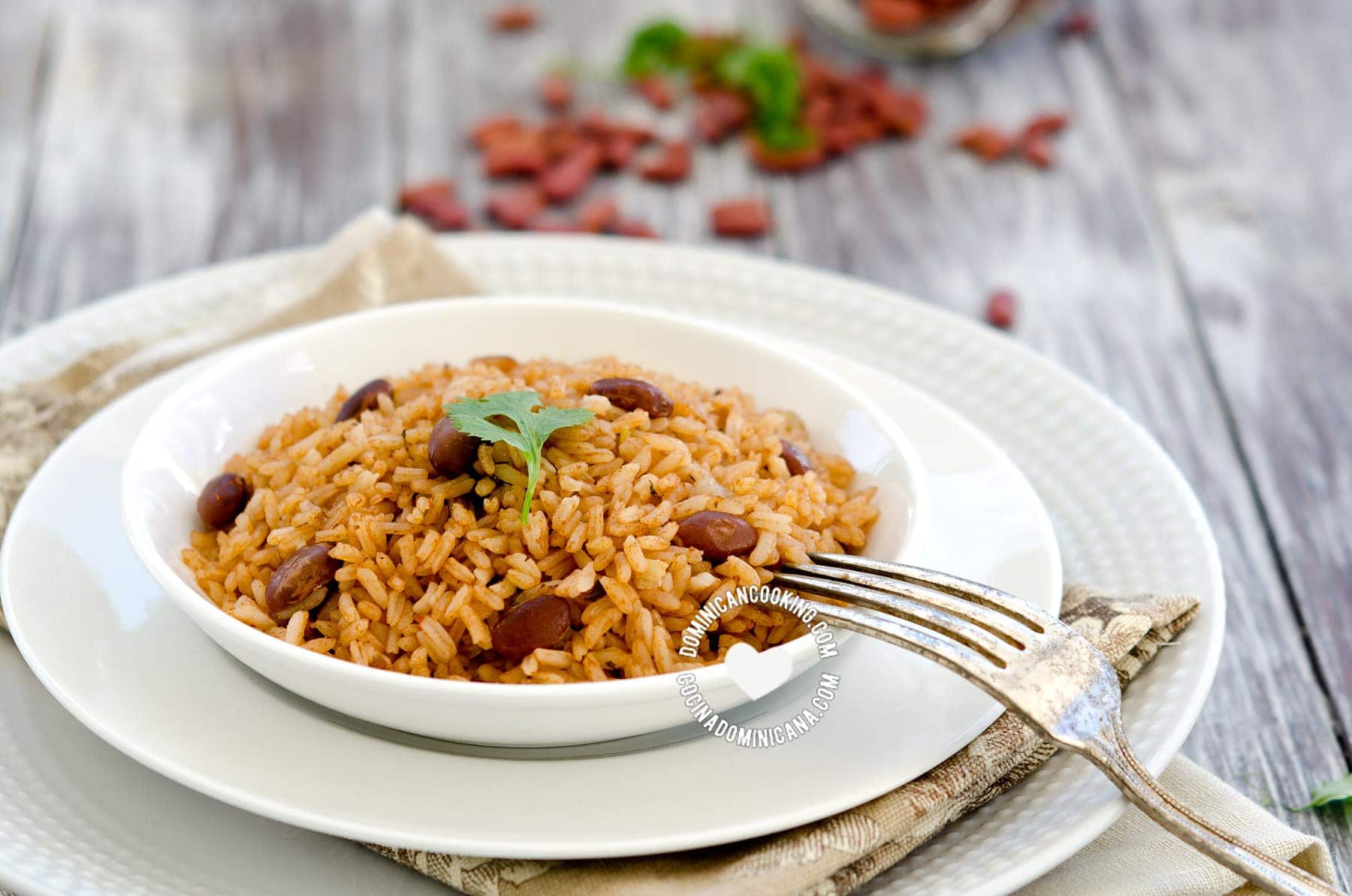
Aside from rice and beans as separate dishes (as described above), moro (short for moros y cristianos) is one of the most popular ways for Dominicans to cook and serve rice. But, what's moro?
To make moro, rice and beans are combined and cooked as a one-pot dish. The most popular is moro de habichuelas, made with pinto beans, pink beans, or red kidney beans. Other combinations are possible by using another type of bean, pigeon peas, and even corn. Moro de guandules is a staple of our Christmas feast, and my favorite is a version that contains coconut milk.
More moro recipes
Moro (Dominican rice and beans) is cooked by boiling the beans (beforehand), then cooking it with vegetables and seasonings (like garlic paste, pepper, onions, tomatoes, tomato sauce (or tomato paste), oregano, fresh cilantro, or parsley), then cooking the rice with all this. The result is a juicy, flavorful rice dish with grains of rice that are perfectly cooked, but still separate from each other.
How to serve moro
We serve moro with any of our "guisado" meats or vegetables: pollo guisado (chicken), res guisada (beef), cerdo guisado (pork), chivo guisado (goat) or berenjenas guisadas (eggplants) are always great to combine with moro.
Locrio (Dominican rice with meat or seafood)
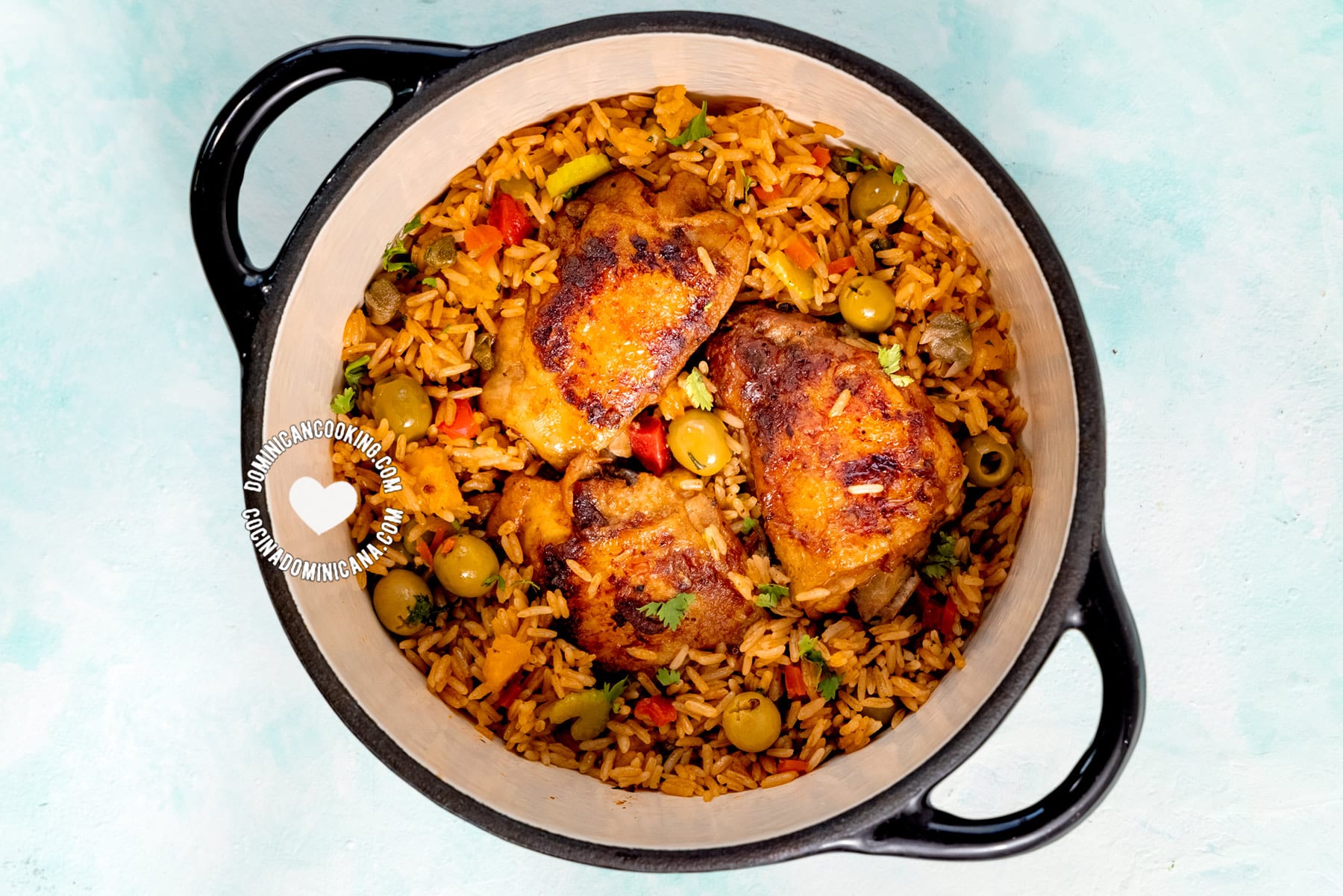
Locrio is another very popular rice combination in the Dominican Republic and the epitome of Dominican sazon (flavor). Dominican locrio is made by cooking together with rice, vegetables (like tomato, peppers, auyama, red onion, etc), seasonings (orégano, cilantro, parsley, garlic, etc.), and some type of meat or seafood.
Locrio de pollo is the most popular one, and locrio de camarones (Dominican rice with shrimp) is another favorite classic. We also have many other popular locrio recipes to share.
More locrio recipes
- Locrio de Salami (Rice and Dominican-Style Salami)
- Locrio de Pica-Pica (Rice and Spicy Sardines)
- Locrio de Longaniza y Camarones ("Surf and Turf" Rice)
- Locrio de Arenque (Rice and Smoked Herrings)
- Locrio de Molleja de Pollo (Rice and Chicken Gizzards)
- Locrio de Chuleta (Smoked Pork Chop Rice)
- Locrio de Camarones (Dominican Rice and Shrimp)
- Locrio de Chicharrón de Cerdo (Rice and Pork Crackling)
How to serve locrio
It all depends on your taste and family, but (according to several informal polls we've taken of our readers), about half of us like Dominican beans with locrio. A Dominican salad is always welcome, and perhaps some tostones, frito maduros, or arepitas de yuca or arepitas de maíz.
Asopao (Dominican rice stew)
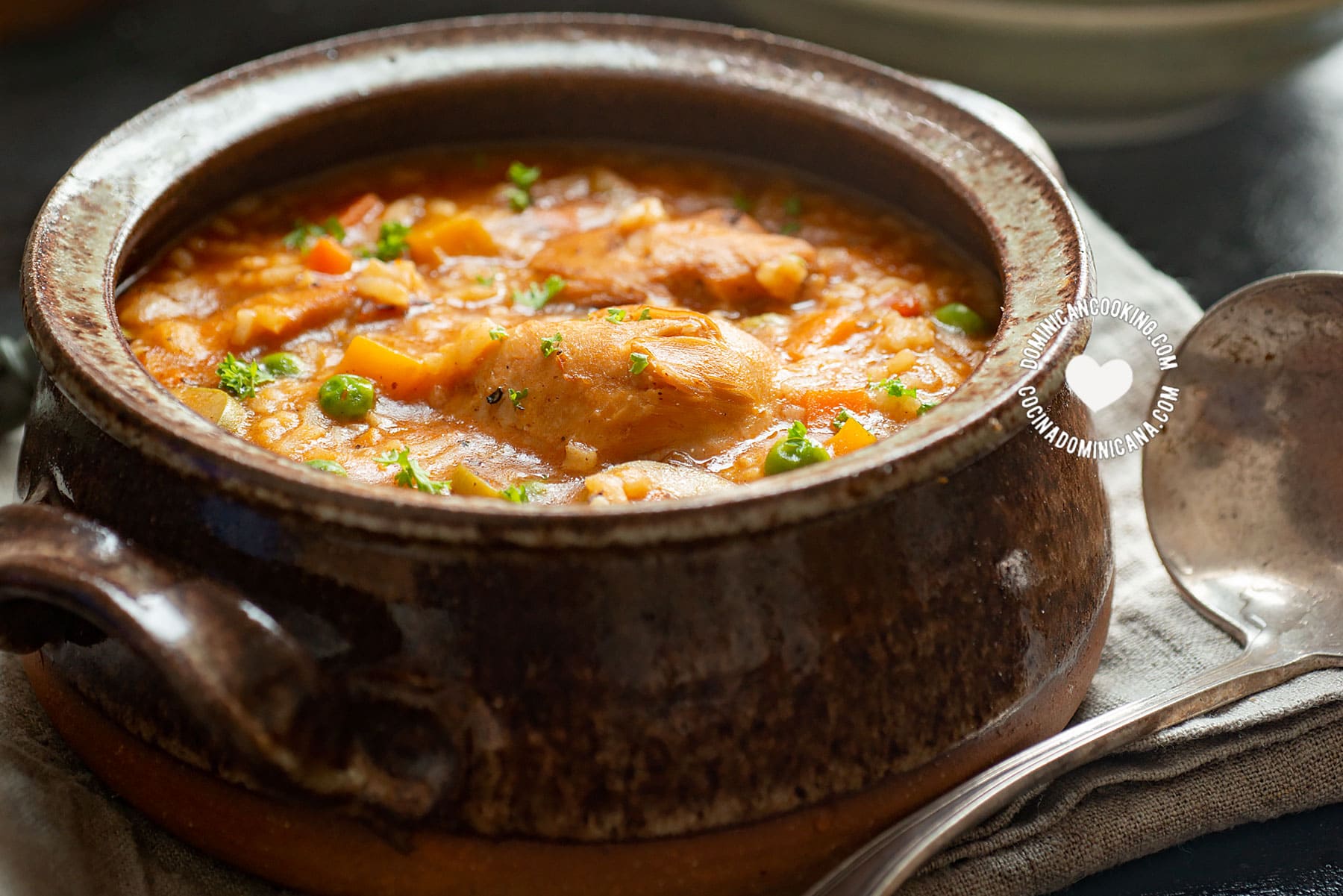
Asopao (short for asopado, or soup-like) is a rice stew, and a marvelous way to serve rice in the Dominican republic. Asopao is made by cooking rice, combined with vegetables, seasonings, and some sort of protein. The most popular asopaos are chicken asopao and shrimp asopao.
How to serve asopao
A few slices of avocado and some tostones are definitely the way to go. Some people like serving casabe with asopao, some like a ripe banana with it.
Arroz con leche (Dominican rice pudding)
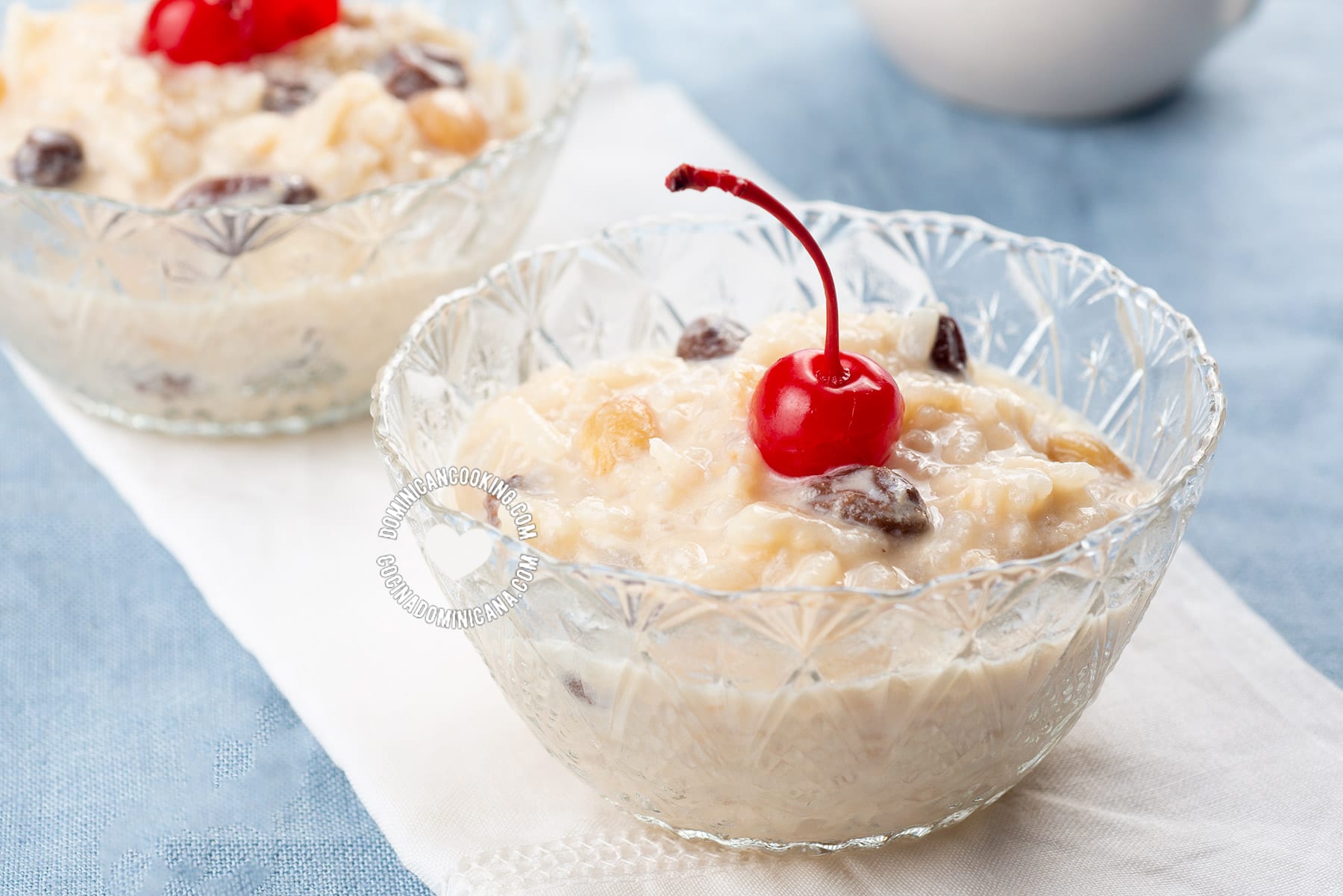
Dominican rice pudding or arroz con leche is made in two versions: a sweetened arroz con leche, also known as arroz con dulce, and an unsweetened version. The former is one of our favorite desserts and the latter is commonly served as a breakfast or dinner porridge-type dish. Ou recipe gives you instructions to make both.
To make Dominican rice pudding, the rice is boiled, then milk and spices are added, sugar and butter too, depending on the type rice pudding, and simmered until it has thickened.
More Dominican rice dishes
Many more rice dishes are made and enjoyed by Dominicans, including Dominican yellow rice (which varies from home to home), chofán (Dominican fried rice with peas, carrot, celery, meat, etc.), arroz con fideos (Dominican rice with fried noodles), and others.
And to take this one step further, we also have a very popular rice-based drink: Pera piña, a popular drink with children that combines rice and pineapple.
- Chambre or Chapea (Beans, Rice and Meat Stew)
- Arroz Amarillo (Yellow Rice with Carrot and Onion)
- Pera-Piña (Rice and Pineapple Drink)
- Niño Envuelto (Rice and Beef Cabbage Rolls)
- Arroz con Fideos (Rice and Fried Noodles)
- Chofan (Dominican Chow Fan Fried Rice)
- Pastelón de Arroz (Cheesy Beef and Rice Casserole)
- Arroz Navideño (Dominican Christmas Rice)
Video
Published: Mar 30, 2013


